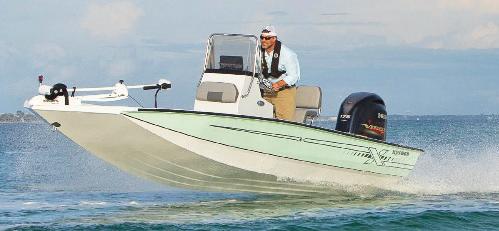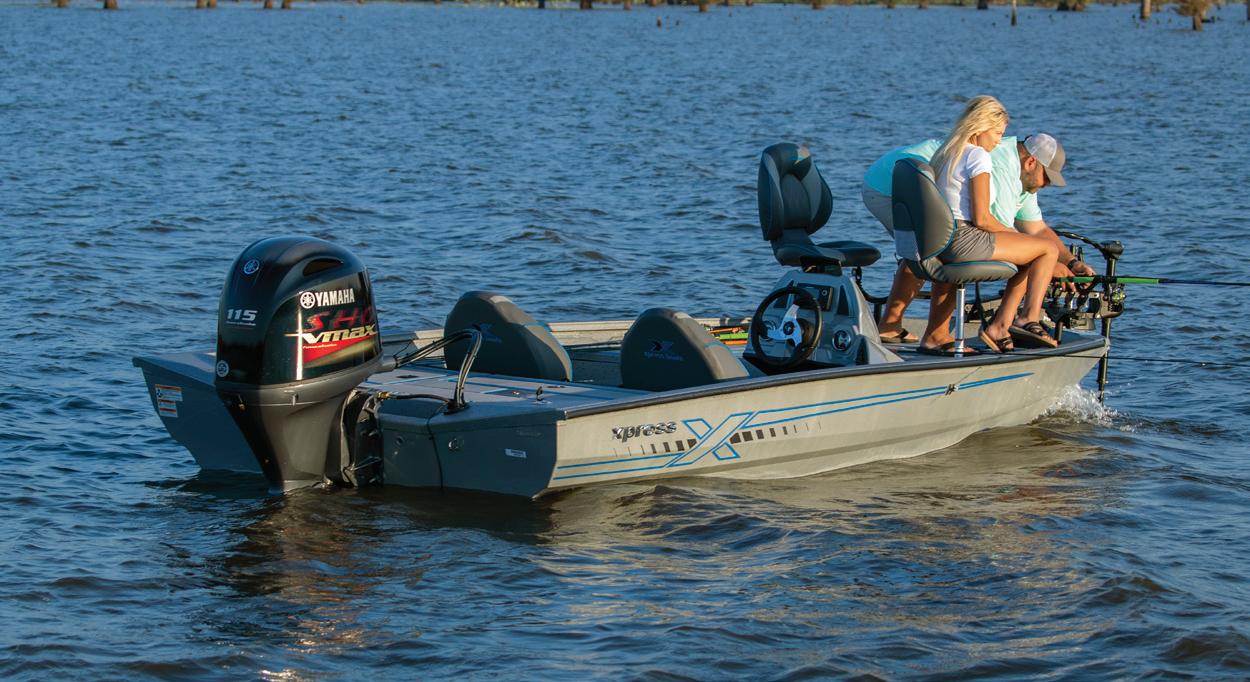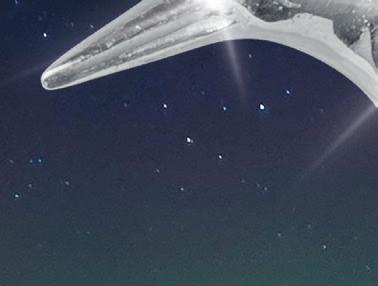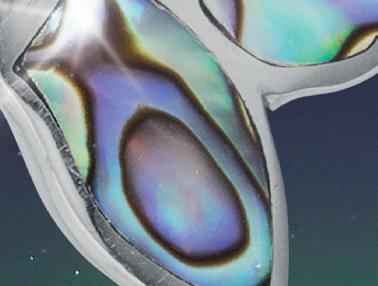
















































A watch that revolutionized timekeeping at a price equally as radical.
In the history of timepieces, few moments are more important than the creation of the world’s first Piezo timepiece. First released to the public in 1969, the watch turned the entire industry on its head, ushering in a new era of timekeeping. It’s this legacy that we’re honoring with the Timemaster Watch, available only through Stauer at a price only we can offer.

Prior to Piezo watches, gravity-driven Swiss watches were the standard bearer of precision timekeeping. But all that changed when the first commercially available Piezo watch came onto the market.
The result of ten years of research and development by some of the world’s top engineers, they discovered that when you squeeze a certain type of crystal, it generates a tiny electric current. And, if you pass electricity through the crystal, it vibrates at a precise frequency–exactly 32,768 times each second. When it came on the market, the Piezo watch was the most dependable timepiece available, accurate to 0.2 seconds per day. Today, it’s still considered a spectacular advance in electrical engineering.












“[Piezo timepieces]...it would shake the Swiss watch industry to its very foundations.”

Foundation For Economic Education

With the Timemaster we’ve set one of the world’s most important mechanical advances inside a decidedly masculine case. A handsome prodigy in rich leather and gold-finished stainless steel. The simplicity of the watch’s case belies an ornately detailed dial, which reflects the prestige of this timepiece.
Call today to secure your own marvel of timekeeping history. Because we work directly with our own craftsman we’re able to offer the Timemaster at a fraction of the price that many Piezo watches cost. But a watch like this doesn’t come along every day. Call today before time runs out and they’re gone.
Your satisfaction is 100% guaranteed. Spend some time with this engineering masterpiece for one month. If you’re not convinced you got excellence for less, simply send it back within 30 days for a refund of the item price. But we’re betting this timekeeping pioneer is a keeper.
Dear Angler,
Are you looking for a change in the New Year? We have plans to expand in 2023 and are seeking like-minded outdoor enthusiasts who share in our vision to bring our free publication to every town in America!
Do you want to work from home, be your own boss, and control your time and earnings? Then owning your own fishing magazine may be right for you!
Our ideal candidate for this unique business opportunity:
• Loves the Outdoors
• Loves Meeting People
• Has Prior Business Experience or at Least Three Years of Sales Experience

• Has Good Credit & Driver’s License
• Is a Self-Starter
If you or someone you know is looking for an opportunity to own their own home-based business and earn a living in the outdoor industry, please contact us at 321.777.2773 x 1 or email info@coastalanglermagazine.com.
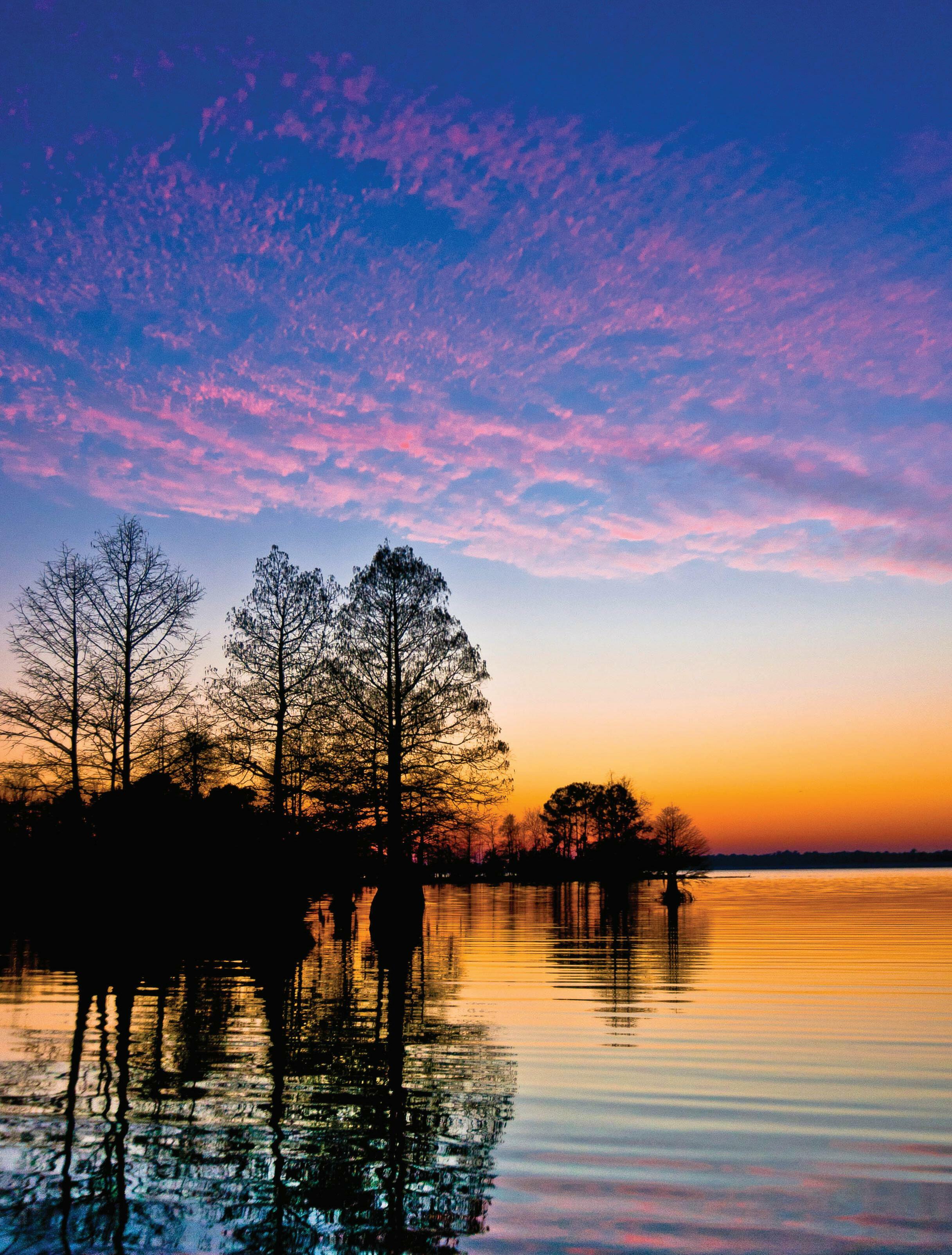
Ask us if we have a franchise territory available near you! We have freshwater and saltwater franchise territories available throughout the US and abroad!
Tight lines, Ben Martin
Editor In Chief
Coastal Angler Magazine
The Angler Magazine



www.CoastalAnglerMag.com
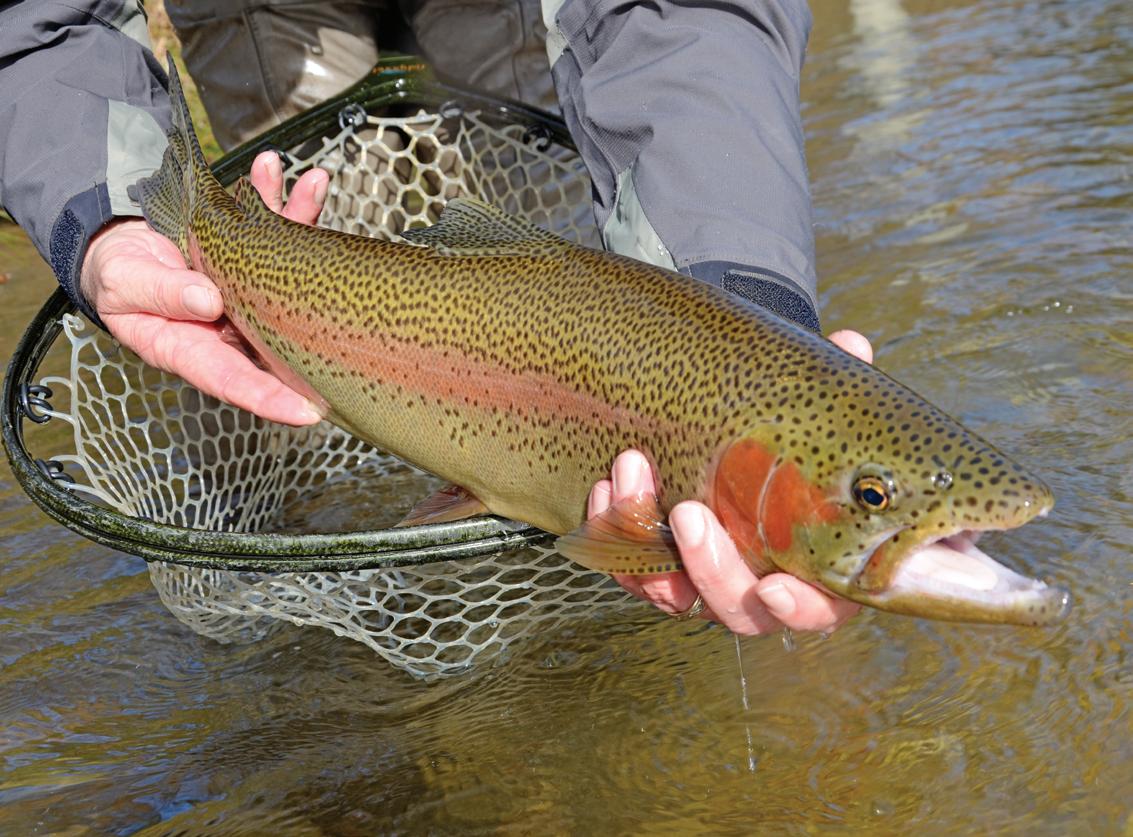 By Nick Carter
By Nick Carter
Trout like cold water, but there’s no denying the slow down that occurs on most wintertime trout fisheries. When water temps fall into the low 40s and below, insect life and other food sources are less prevalent. Trout metabolisms slow and they go into energy-conservation mode. They are content to hover near the bottom out of heavy current and feed only when an easy opportunity arises.
That said, fish still need to eat, and intrepid anglers will find joy in the seclusion of a wintertime trout stream. Here are some tips to raise the odds of a great wintertime trout trip. Dress warmly, wade carefully and savor the taste of the ice you suck from your rod guides.
1) Choose Destinations Wisely: Winter is not the time to explore high-elevation brook trout streams. Instead, float a tailwater, where water temps are consistent year-round, or go to lower elevation streams that are a bit warmer. For a target-rich environment, try out a delayed-harvest fishery. They are stocked heavily through the cooler months.
2) Fish Warm Spells: Two or three days of consistently warmer weather are primetime in terms of winter trout fishing. Everything in the stream, from the trout to the bugs and baitfish they eat, perks up.
By the same logic, the best bite is usually during the warmest part of the day. Sun warms the shallows, bringing out the tiny little midges, black stoneflies and blue-winged olives that are wintertime staples. Even if the action is subsurface, trout will take advantage of easy feeding opportunities.
3) Fish Meticulously: Unless trout are visibly rising, subsurface is the way to go. Turn your attention away from the riffles where rainbows pop dry flies in spring, and look to the deeper, slower runs. Pick them apart with nymph rigs. Keep in mind that most winter food items will be small, but fish a variety of sizes and patterns at the same time and cover every inch of each run vertically and horizontally. The idea is to hit a fish in the nose, and this is best achieved fishing slowly and carefully.
If you want to tempt a giant trout, it’s a good time to dead drift a big streamer with the same meticulous patience. Don’t hesitate to fish a heavy streamer deep under an indicator. Sometimes a big mouthful is enough to convince a lock-jawed bruiser to eat.
4) Fish Safely: Flooding your waders can kill you when it’s frigid. During cold snaps, consider fishing near the truck, where a quick jog can put you in a heated cab if you get wet. If you do go into the backcountry, take a dry-bag with fire-starting equipment, a towel and a change of clothes.
Wherever you fish, wade carefully, avoid stepping on frozen-over rocks, kick any snow off your boots before entering the water and avoid taking chances like wading deep water or heavy flows.
Nick Carter is the author of “Flyfisher’s Guide to North Carolina & Georgia.” Contact him at nsc8957@gmail.com.






Berkeley County is a wonderland for outdoor enthusiasts, sports buffs, adventure seekers, and water lovers. From exemplary fishing for striped bass, or a trophy largemouth bass, to our hiking trails and water activities, along with scenic outdoors where you can catch a glimpse of white tail deer and gators, Berkeley County has activities to fit all visitors and families. Learn more about Berkeley County at: exploreberkeleycounty.com





Next stop Manaus, Brazil! It all started when my good friend Capt. Johnny Stabile called.
J: I know what you’re going to say before I even ask.
G: What is it?
J: Do you want to go Peacock fishing in Brazil?



G: When?
J: We would leave 13 days after our Alaska trip.
Of course, my response was, “Ok, sounds great!”
That would give me just enough time to get back from Alaska, fulfill orders for my business, and get things ready to head south. We flew out of Miami, and with a layover in Panama City, Panama met up with several other fishermen on the expedition. After a very long night of traveling, we finally landed in Brazil and hopped on a quick seaplane ride to the Rio Matupiri for six and a half days of non-stop fishing!
We stayed aboard the Amazon Legend with a very accommodating crew of 14. We ate like kings and fished hard. Our typical day of fishing consisted of getting up before the sun for a quick breakfast and loading into skiffs to spend the day zipping around to the guide’s best fishing spots. We threw a variety of lures, mostly topwaters like big choppers and walking baits. Johnny’s favorites of the trip were a Rebel Jumping Minnow and a Borboleta Woodstock 10.5 cm. He wore out the peacock bass on that Jumping Minnow. I threw bucktail jigs, and they produced the largest number of fish, but for Johnny it was all about the BIG’UNS!
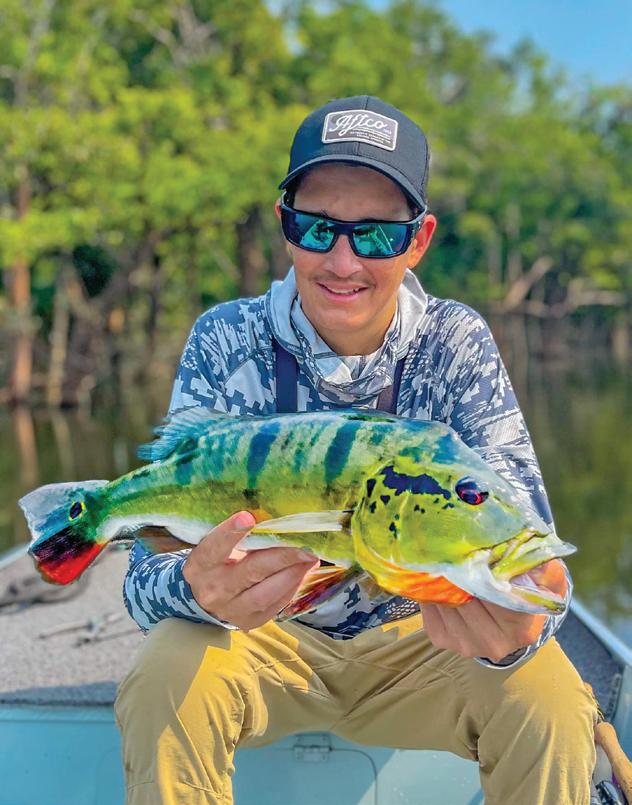
Johnny loves to fly fish, so one special thing about fishing in Brazil for him was catching several nice fish on the fly rod with easy-to-tie flies that he made myself. These fish are so much more aggressive than the peacock bass you find in south Florida. For a little perspective, we caught more than 350 peacocks and more than 50 piranha along with several other exotic species. The average peacock was 2 to 3 pounds, and Johnny’s biggest weighed more than 8 pounds. One person in our party caught a big peacock that pulled the scales to nearly 14 pounds.
After a long morning of non-stop action, sometimes we would take a quick lunch break and hide in the shade of a tree for a wonderful shore lunch. The guides packed everything for remote meals on land, where they cooked native fare on an open fire. While they cooked, we relaxed in hammocks with
plenty of cold drinks and the opportunity for a quick nap before lunch was served. Many of the fish we caught contributed to these lunches, and there were also steaks and chicken available with all the fixins. Homemade salsa and native seasonings complimented the meals perfectly. After a relaxing lunch, it was back on the skiff and back in the action!
After afternoons of fishing, we indulged in fivestar dining and the most important part of the trip, air conditioning! The crew made up our rooms, did our laundry and prepared dinner every evening. Specialty cocktails were also provided, if that’s your fancy, but Johnny’s favorite was the freshly squeezed juices. He’s already looking forward to the passion fruit juice when we return next year!
Johnny shot some great video of our trip. Check it out in the December edition of The Angler Video Magazine

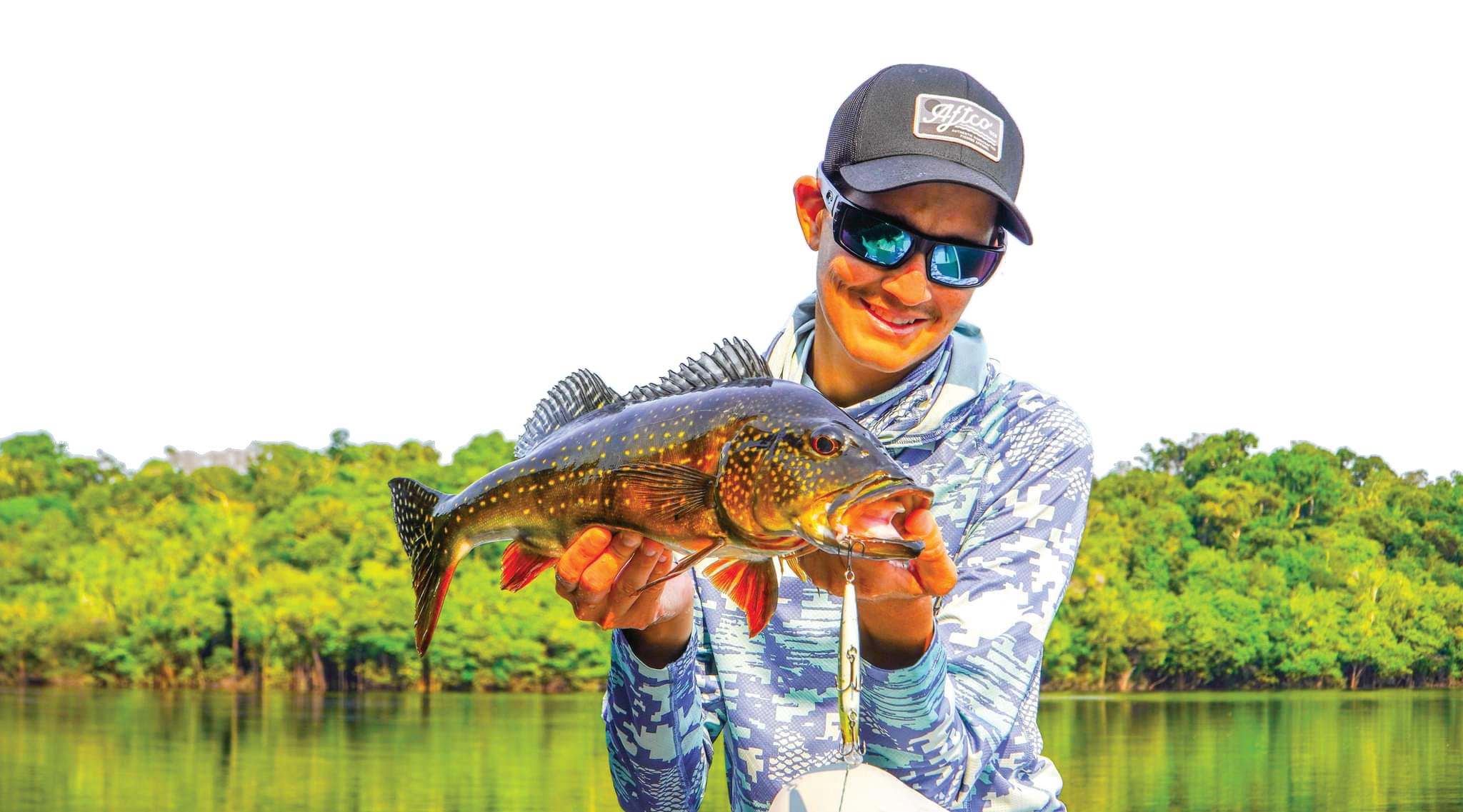
If you are interested in a Brazilian fishing adventure, e-mail Johnny at captain@ SFLFishingCharters.com or Gary at gary@purgeright.com.
 By Capt. Johnny Stabile and Gary Turner
By Capt. Johnny Stabile and Gary Turner
For as long as I can remember, offshore bottom fishing is what we look forward to during the last half of November and the entire month of December. The week of Christmas has always been considered the apex of the bottom-fishing year.






You can see the move of the big snappers marching offshore on the edge of the colder water. This will pile big snapper and other bottomdwelling species up on certain staging areas, along with a clean water temperature line that also stacks up the kings and wahoo. Keep a light line bait out while you’re bottom fishing. There is no telling what you’ll catch and on what baits.
Of course, I love a pinfish, grass grunts or sailors choice for grouper and snapper baits for more than one reason. 1) They get bites from the target species; and 2) they eliminate most of the trash bites from grunts, pinkies and sea bass.


Yes, I love a live bait on a jig, but don’t ever forget that a big grouper also loves a big chunk of cut bait. We have seen a huge uptick in amberjack and almaco jacks in the past few


years for some reason. This is an excellent bait source! I like to keep one of the first, smaller, amberjacks that come up just for this cut-bait option. The big chunks of cut bait do
of my bottom-fishing strategy. This is also the reason I take a couple boxes of squid on every trip. I start every new post-up on a ledge or live bottom area with everyone firing down whole squid every drop. I don’t care what they are catching. It’s usually grunts, pinkies or seabass, but what is really happening on the bottom is the squid are being ripped to shreds and small pieces are swirling around and creating a chum slick. After several volleys of whole squid, I change it up to live pinfish, grass grunts or other live baits on a jig.

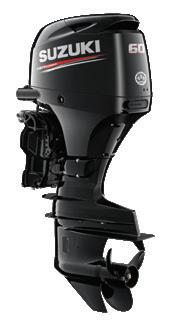
Grouper and big snapper see the live bait as a smaller fish that was grabbed by a crab while feeding on small pieces of squid. It’s a winning technique that has been very successful for me and other Decoy Jig users for years now. It is also new to the fish, tackle-wise.
two things. They get bites and they also create a “chum slick” on the bottom right where you are fishing. When the cut bait gets pecked at, all the small pieces of flesh swirl around as it’s being eaten.
This is one of the most important aspects
The beauty of this cold water line moving farther offshore with every cold front creates opportunity for a variety of species. You never know; keep firing down cut bait and setting the hook on “strange feeling bites,” and you might even catch a big deep-water lobster like the one in the video below.
Check out some awesome bottom fishing videos at https://youtu.be/w1YmT6M0ObQ.


Owner StriperFun Guide Service, Tennessee and Kentucky Walleye, Bass, Crappie and Muskie Charters, Superbaittanks.com, Captain Jim Marine Electronics and much more…… DATE OF REPORT: December 2022
Greetings to my readers! I hope that the world finds you and your family doing well!

COME VISIT BEAUTIFUL LAUREL COUNTY KENTUCKY! BOOK YOUR SPRING FISHING TRIPS EARLY WHILE WE STILL HAVE DATES AVAILABLE!
WALLEYE FISHING ON LAUREL LAKE –STRIPER FISHING ON THE LAUREL DAM TRACE!
Kentucky Walleye Charters
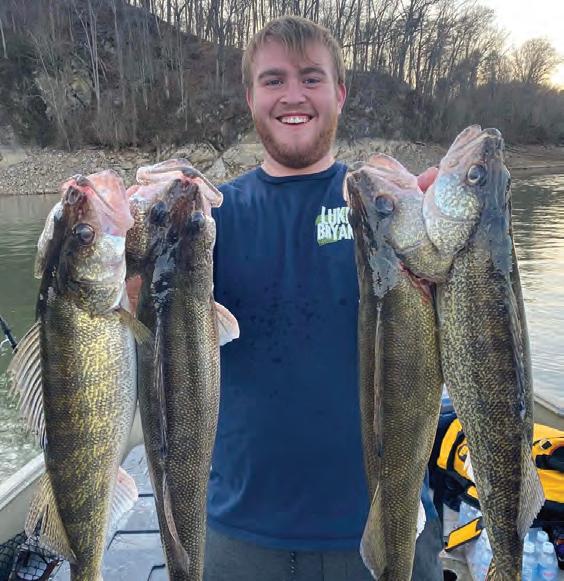
Laurel River Lake is a reservoir built in 1977 by the U.S. Army Corps of Engineers on the Laurel River, a tributary of the Cumberland River, in the Daniel Boone National Forest. It is one of the top Walleye lakes in America! Our Walleye guides on Laurel Lake for Kentucky Walleye Charters are Fred Hoskins, Gary Harris and Bracken Castle. They are KY licensed guides who have many years of fishing experience for Walleye on Laurel Lake. We offer both day and night trips.
The fishing is phenomenal! These trips provide a great learning curve for our clients as we use live bait, jig and troll “Captain Jim Magic” Walleye lures! Kentucky Walleye Charters offers trips on Laurel Lake April 1st through October 15th.
The Laurel River Dam Trace is located in the Daniel Boone National Forest. We fish for Stripers in the “cold” trace waters that flow out of the Laurel Lake Dam into the Cumberland River, as well as in the Cumberland River itself near where the trace flows in! This fishing begins May 1st and runs through September 15th.
Our guides Fred Hoskins, Gary Harris and Bracken Castle grew up there and have years of experience catching these plentiful fish that abound in the cold trace waters from the dam! In this area where the Cumberland River meets the tail water out of Laurel Lake, the fishing is phenomenal! Limits are caught frequently. The average
fish is usually around 7 pounds, but larger Stripers up to 20 pounds are not uncommon. We fish with live Shad using down lines and pulling planer boards as well.
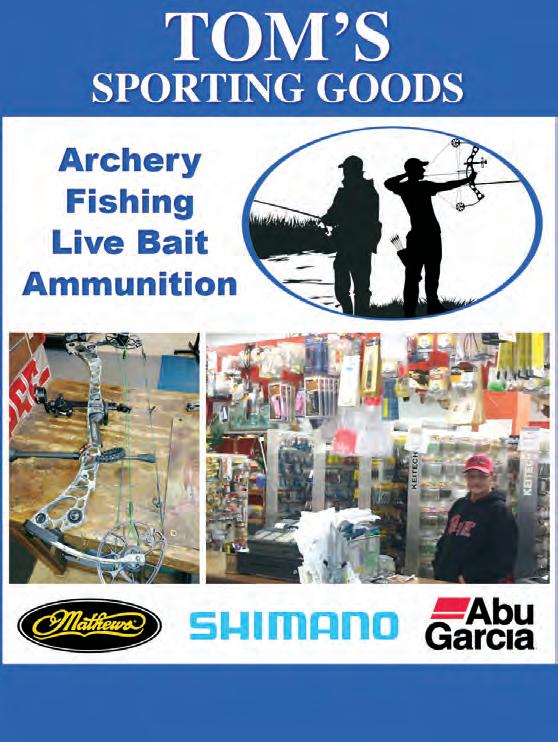
All of the above trips book up in advance! Everything is provided! Rods, reels, bait, cleaning, filleting and bagging of the catch as well as trip photos to remember the trip! We can take up to four (4) customers.
It is great to be alive and be a “free” American! I look forward to seeing all of you this year on the water. Always remember to stop and shake the hand of a person in uniform or wearing garb that shows they are a veteran! Their service is why you speak English, can vote and can enjoy the freedoms you do! Until next time, blue skies and tight lines!
With full USCG and State licensing and insurance, all guides who take Captain Jim’s clients (15 guides on 14 waterways) can take you on a safe, fun and unforgettable fishing adventure! Check out all of our fishing services as well as our exclusive “online” store at www.striperfun.com or call 931-403-2501 to make reservations today.


Two good ole’ boys decided to take a fishing trip to Alaska. Flying back home Leroy is crunching some numbers when he looks over at Billy and says, “You know Billy, from my calculations of what this trip cost us, I figure each fish cost us about two hundred dollars.” Billy thinks about it for a moment and replies, “Well, I’m dang sure glad we didn’t catch any more. I’d be broke!”
Having fly fished for over 45 years now, I’ve spent countless dollars on my hobby from equipment to trips. It’s been well worth it! Recently, I had a moment to reconsider that prospect.

For over 30 years, I’ve kept detailed records of each trip. The goal was to eventually have a database of information to use on subsequent trips to know where to go and what fly would work best under the conditions. It works well! (Costal Angler, Feb 2022) However, this created a monkey I had to get off my back.

At the conclusion of 2021, I had my second foot surgery in two years and I used the time to tie flies, clean my equipment and review my fishing statistics. I realized in 2021 that I had caught a total of 943 trout in 37 trips. Always the one to recognize a future goal, I considered what it would have taken to reach 1,000 in a calendar year. By my calculation, that would have taken a little over two trips. Just two more trips!
Going into 2022, the surgery required substantial recovery, which prevented my fishing until April. I did survive, meaning my wife didn’t kill me, though I did have to beg for a ride in the car around the block. I remember a dog we had, Scooter, who loved a ride so much, he’d lose total control of his tongue and it’d hang way out the side of his mouth. I now know how Scooter felt!
As I began fishing, I felt a sense of nostalgia, which led to my re-visiting streams I’d not cast a fly
into since I was a teenager when Ronald Reagan was President. Perhaps a time to return to my roots, who knows, but this “tour” paid off in larger catch numbers. For example, in two weekend camping trips I caught 162 and 150 respectively. Then, there’s the day I approached the century mark and felt the urge to break my record of 101 in a day. I stopped at 2 pm with 104. All this drew me nearer to what had by now become a goal as I went over 800.
Having taken a month and half off from mid-September to November, I looked at my status and found that I was only 23 trout away from 1,000 in 29 trips. I figured a good day, or at least two decent days, would get me there. Have you ever noticed how the closer you get to an opportunity or goal, the tougher it becomes and the more things go wrong? With football teams, it’s injury or other mishaps. On my first trip in a while, I had both!
The day started off quickly with five decent browns within the first ten minutes. This is going to be easy! Then things slowed down. Moving to another location, I was able to land another 12 trout, leaving me now within six of my goal. Using a dry-dropper rig in a long pool, I landed a nice rainbow on the dry. The dropper nymph snagged my left hand just below the index finger past the barb! I quickly cut the line so the rainbow wouldn’t continue to pull it’s painful revenge on me. After releasing number 995, I grit my teeth and yanked the hook out with my hemostats. I didn’t scream…At least not on the outside.
With five to go now, I stepped up onto a jagged granite bolder, trusting my new popular brand rubber wading boots to grip. Wrong! In avoiding a face plant, I dropped my rod and reel, resulting in warping the reel so that it would not turn. Still, I caught number 996 on the next
cast, bloody hand and all.
Hopping into my car as the sun neared the western horizon to move to a final location, I packed up my busted reel and four weight rod replacing it with my six-weight rod and reel for sunset streamer fishing. I caught number 997 in some pocket water using my favorite olive wooly-booger pattern. A few minutes later, in retrieving the fly to make a sharp back cast, I had forgotten about the overhanging sycamore tree trunk behind me. I broke my favorite six-weight rod I’d had for over 20 years! I made the long trek back to the car to retrieve my four-weight and attach my six-weight reel. Soon afterwards, I hooked number 998, followed a few casts later with number 999, a nice brown. Scratch that, it got off before I got the net under it. Frustration began to rise as fast as the sun set when my fishing buddy remarked something about is it worth it.
Still needing two, I went to the head of a deep pool. Looking at the sun setting on a distant mountain and feeling that monkey getting heavier as my chance of reaching my goal this trip plummeted, I cast
into the deep, clear water. A nice, ten-inch rainbow slammed the streamer, which I quickly landed. Number 999 in the net and only one more needed.
There was now little daylight, very little. Last month at my wife’s fortieth high school reunion, an old school acquaintance described me in high school as a tenacious, goal setter. Still, never one to relent, I went back to the sycamore hole. Foolishness and tenacity would not allow me to back away from a challenge as I felt it was the best chance as I’d seen one there earlier that I wanted to take another shot at. With the last rays of twilight, doubt began to settle as heavy as a pair of water filled chest waders and I was beginning to doubt it would end today. I cast across the current and into a distant pool. As the current pulled the streamer out of the pocket, a rainbow slammed the streamer. As I drew the small bow into my net, the weight lifted, the monkey was gone and I had reached 1000! I cannot recall the last time I was so happy over such a small trout.
Over the past twelve months, I got a rebuilt, I call it bionic, foot.
I was also blessed with a long, slow but gradual healing process followed by wonderful trips into my beloved Smoky Mountains with the best fishing buddies. Still, I’m wavering on whether those last
six trout were worth a rod, a reel, and a barbed hook in the hand.
On second thought…Yeah, I’d do it all over again, just not with those high priced boots!

Jim Parks, a native of Newport, Tennessee, has spent forty-three years fly-fishing in the Great Smoky Mountains National Park, which he considers his home waters. Check out his book “Tails of the Smokies” in local bookstores. Jim currently resides in Kodak, Tennessee, with Trena, his wife and best friend of thirty-three years.

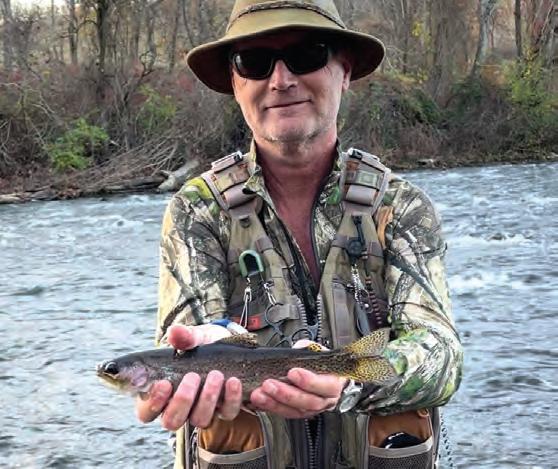
Growing up here in East Tennessee we did a lot of hunting and, of course, fishing. I have many fond memories of fishing the old farm ponds with my father and my brother and sometimes, with the entire family.


One year, on my 8th birthday, I got a second-hand Zebco 202 fishing rod from a local
pawnshop and from that day on, I would go fishing anytime I could get out there. Sundays were always my favorite day of the week because my family would all gather at my Grandparents’ for Sunday dinner, playing with my cousins, and a guaranteed day of fishing. I would spend hours walking the wide-open cow pastures, going from farm
pond to farm pond, enjoying the outdoors and its peaceful nature. I started out fishing for bream/ bluegill of course, because they were plentiful, and fun and easy to catch. It was nothing to catch 20-30 in no time.
My Father worked long hours when I was growing up so every chance we got to go fishing, that’s exactly what we did. Now, going to Douglas Lake was a big deal since I rarely got a chance to fish the big water and, even though my father was a hardcore crappie angler, I was out to catch whatever hit my line.We would fish the months of fall, winter, and spring pretty hard but I would have to say fall was my favorite.
Once the big-time fisherman hit the TV in the late 70’s to early 80’s, like Bill Dance, Roland Martin, and Orlando Wilson
along with the B.A.S.S and their tournament recaps, I knew I wanted to be a bass angler. I was glued to that TV absorbing as much info as I could squeeze into a young boys brain. Numerous times on our fishing trips, Dad would be catching the crappie one after the other, while I walked the banks searching for bass. He would yell down the bank to me saying, “Hey, get over here and tie on some jigs and help me catch these crappie!”. I laugh now because I actually didn’t know how important Crappie fishing was going to be to my life. Around age twelve, I was taught by my father, how to tie my own crappie hair jigs. He was always tying up jigs the night before our fishing trips. We didn’t own a boat back then and spent many days walking many miles around



If you’re like me, when you were young and bulletproof, you never gave backcountry fishing or backpacking safety any thought. As I’ve gotten older and continue to enjoy backcountry (blue line) fly fishing combined with backpacking, personal safety has become more of a concern (and I realize now that personal safety should always have been on my radar–a misstep can happen at any age). What is your protocol if you can’t get back to your vehicle or base camp due to being lost or for some medical reason?
Recently, a friend told a story of how he broke his leg on a solo afternoon fly fishing trip 20 miles from his mountain home. He told his wife he was going to a particular creek and would be home shortly after dark. On the way to his destination, he changed his mind and went to a different creek but didn’t update the change with his wife or anyone else. It was an overcast afternoon with highs in the 40’s and possible rain in the forecast. After a couple hours of successful fishing, he was climbing a 10’ steep bank to get back on the trail. Halfway up the embankment, he slipped on a rock and broke his leg. A few miles from his truck with no cell coverage to
call for help. In addition to no one knowing where he was, he found himself in trouble as rain began to fall and the temperature started dropping. In great pain, he climbed the remaining 5’ to the trail then started dragging himself to his truck while calling out for help. Luckily, someone heard his calls and came to his assistance. A few hours later, the Rescue Squad had him on the way to the hospital after splinting his leg and treating him for hypothermia.
1. This story, in addition to my wife’s continuous concerns about me being alone in the wilderness, convinced me to look into tools to help me if the unexpected happened. Below, I’ve listed 10 safety items I keep in my fanny pack or fishing backpack that I’m never without, whether it’s a multi day backcountry trip or just a couple hours from home. Let someone know where you’re going and your expected return time. Be specific about your vehicle location, stream name and how far you expect to go. Be proactive in the details you provide–your rescue depends on those details. Write it down and leave it with someone and/or send a text.
2. Carry a small first aid kit
and know how to use what’s in it. Consider a Basic First Aid Class, sometimes offered through employers or the Red Cross.
3. Wading Staff, an overlooked safety item that in my mind has proven to prevent ankle and leg injuries. The magnetic ones with a holster and lanyard are priceless.
4. A loud whistle works better than yelling. It’s an unnatural sound, so it’s better at attracting attention. I keep mine attached to the neck strap that holds my line nippers.

5. LifeStraw water filter and Nalgene bottle. It doesn’t take up any space and dehydration can be serious.
6. Bic Lighter and fire starter. I use cotton balls doused in Vaseline, stored in a small watertight container. A fire can be very calming when hurt and cold in the dark.
7. A charged cell phone provides more than just communication, pictures and GPS. Did you know apps like All Trails and Gaia will work on your phone when you have no cell service? Now you know, but also always carry an up to date waterproof Topo map of the area you’re fishing.
8. A flashlight or rechargeable headlamp. No one wants to be stuck alone in the dark.
9. Zoleo or In Reach satellite communicator. These devices offer SOS (911 notification) and texting functions through your smartphone when you have no cell or Wi-Fi coverage.
10. A 10K mAh portable charger and cord, which is about the same size as a smartphone. Mine will charge all the electronic items listed above.
You should always have up to date information related to the weather in the backcountry and dress accordingly when you are fishing.
This list is not all-inclusive. Adjust to your needs and enjoy your great outdoors adventures safely, always.
the areas of Swann’s Marina, Fancher’s Hollow, Nina Creek, and Indian Creek. There were many cold days accompanied by numb hands and feet, but we would fish until we thought our freezer was full and we had plenty for not only us but also others needing a meal. Dad made sure we always shared our blessings with others, as God had given to us. Now, this was back before there was a limit put on crappie at Douglas Lake.
Thinking back, I’m not quite sure when, or how I started my journey of crappie fishing, other than hours would pass, and I’d
see Dad is catching fish hand over fist while I was catching the occasional dumb fish. Well, it didn’t take me too long to know I wanted to catch fish like he was doing so I joined him. So many times, I would get aggravated, but he would calm me down and tell me to slow down and fish slow. I am grateful that my Dad taught me the finesse it takes to catch these sometimes finicky fish.
I’m so blessed to still have my dad as a fishing buddy even at 76 years old and yes, he can still out-fish me. He still loves to float n’ jig fish whereas I moved into different methods for crappie,
such as vertical jigging or dead sticking, casting on structure such as rock piles, drop offs, and brush.
Fast forward to today and I own my own business named Slab Happy Lures, where I tie jigs and mold heads and have a full line of fish catching products. Above all of that, I thank you for taking time out of your day
to read my story. I look forward to sharing many more articles on Crappie fishing that may just help you become a better angler or open your mind to different methods of catching these tasty little panfish.

Nothing better than God, family and fishing. Get Out N’ Get Slab Happy!
Perry Hensley was born and raised in East Tennessee. God has blessed him with a wife, four children, and 6 amazing grandchildren. He grew up hunting and fishing with his father and brother. He is an avid crappie angler with a passion for the outdoors, which led him and his wife to start a business (Slab Happy Lures) in 2018. They offer hand-tied jigs known as the renegade hair jig, which is one of their featured items and sells out in many of the bait shops where they are supplied in their area. If he is not in the Slab Lab, he is out on the lake as much as possible pursuing crappie.

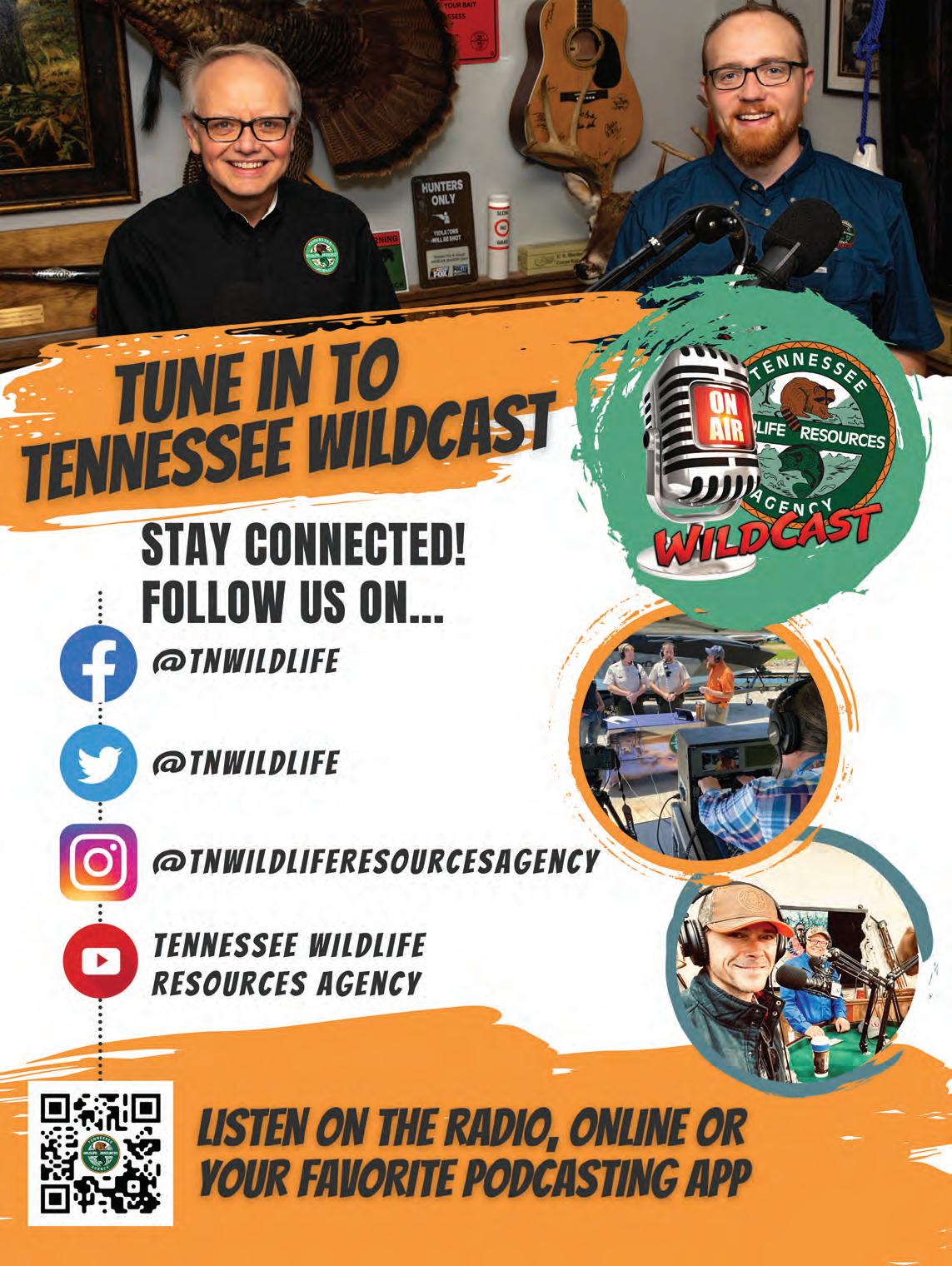

I’ve lived in the woods most of my life. I was taught very early about the gun and the knife. I followed the animals and learned their ways, The food they ate and the tracks they made.

I can tell from a track if it’s a buck or doe, What’s on its mind and where it’s apt to go. The track also tells if I don’t already know, If it’s running scared or walking slow.

Some tracks are easy like reading a book. Some are more subtle and you really gotta look, Maybe a pebble moved out of place, Or maybe a rock with a scratch on its face.
The tracks tell a story and the story’s true, They tell us who we are and what we do. They tell where we go and how we behave, They follow us all from cradle to grave.
I’ve come to admire the critters I’ve followed, They lead me to ridge tops and down in the hollows. I’ve followed deer, bear, raccoon and rabbit, Looking for tracks has just become habit.
The man tracks I find are interesting clues, They’re big and bold and predictable too. A lost man will usually veer to the right, Make a big circle and walk all night.
The angry will stomp the fearful will run, The timid will always follow the sun. We walk in a rhythm and if you watch you’ll see, Just where the next track ought to be.
But when I find the best tracks that ever broke sod, I’m on the trail of the tracks of God. Now I’ll tell you straight and it might sound cheesy, But tracking God ain’t the least bit easy.
Sometimes his tracks don’t make a bit of sense, He’ll take you right through a mud hole or over a fence. He leaves big tracks that are easy to see, But sometimes I wonder where he’s taking me.
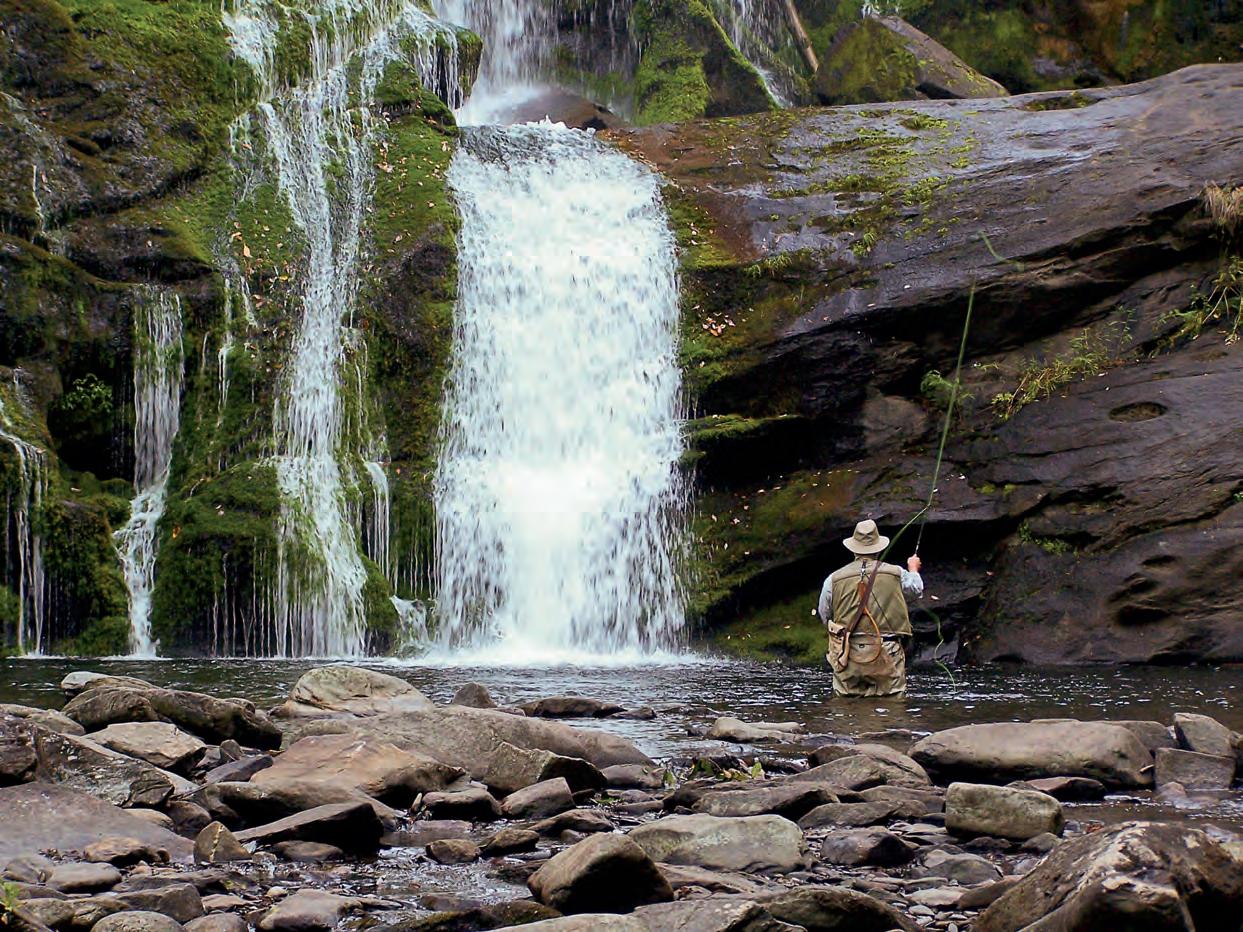

He leads me through valleys with quiet flowing streams, And then through dark forest with beautiful sunbeams, Waterfalls and rainbows and splendorous views, Fiery sunsets with millions of hues.
Sometimes I get close I can feel his breath, In a soft summer breeze like a sweet caress. But then like a vapor he’s gone without a trace, Can’t feel his hand don’t see his face.
I scan the ground and check the leaves, He was just here I truly believe. But then I see it, yep, he was here, There’s a smile on the face where once there were tears.
Sometimes he’s in a candle on a dark lonely night, Sometimes a helper in a long hard fight. I’ve seen his tracks in a marriage minded, In fact, he shows up where strife has ended.
He likes to hang out in the hearts of his children, He’ll make tracks in your heart ifin you’re willin’. I see signs in all sorts of places, Old people smiles and little baby faces.
He shows up mostly in the lives of his people, Not always in churches or buildings or steeples. I guess really what it comes down to, If you’re looking for him, he’s looking for you.







December in the Appalachians is a time to reflect on the past year and shift gears down to a slower pace until the first warm winds of spring slip down the trout streams. Trout in the cold water of winter are normally pretty sluggish about taking a fly unless it practically bumps them on the nose, or is simply just too good to pass up. Trout will eat that’s for sure. Usually during a typical day on your favorite trout stream a rising shift of the water temperature of 3 or 4 degrees will occur and, during this time period, trout will probably move the most to take a fly. That movement may only be a couple of inches but it’s an easier target to hit.
Being on the river during this time period sometimes is crucial to success. Most trout in the mornings will be found close
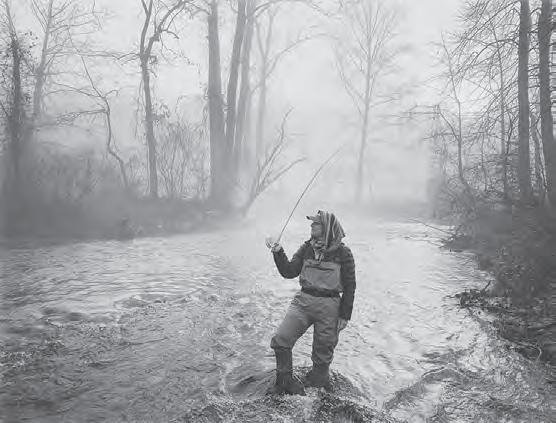
to the bottom and dead drifting nymph patterns is usually the most productive. When the sun comes up and starts the warming
warmer than normal winter day they may be within a foot or two of the surface for a little while. This makes them a target

for dry dropper fishing, a swung wet fly, or soft hackle. Streamers will also work sometimes extremely well during this “up time” for the fish. When the fish are suspended you can literally fish underneath the fish with a nymph rig with no success. It’s still important to put your fly on their nose.

Later in the day, when the sun goes behind the ridge and the water temperature starts falling, the trout will usually sink back down to the bottom of the river to spend the cold night. This is when I pack my fly rod into the truck and head towards the cabin for a warm drink and to spin up a few flies.
process fish will sometimes start to suspend a little off the bottom. Now if it’s really a
Give David Hulsey a call at (770) 639-4001 to book a class or a guided trout trip. See his website at www.hulseyflyfishing.com.





 By Captain Joe Dennis
By Captain Joe Dennis
There is plenty of bait showing up in big schools. Shad mainly, but we are starting to see the big schools of menhaden. Look for gulls and pelicans diving on the menhaden. Drop live baits or throw swim baits into the bait
schools.
You can find plenty of stripers in 30-45 ft this time of year. Creek channels are a great place to start. Look for bait and fish then set your baits right above your marks. *Live herring and shad will work the best. Not as good as
the warmer months but you can still catch the more active fish on spoons. Jigging vertical is the best presentation.

Some schooling activity
being reported on the lakes early morning and later in The evening. Cast plastic swim baits into the schools. Look for the BIRDS. The big bream and crappie are Continued, see LOW COUNTRY
 By Mike McSwain
By Mike McSwain
If you’re having trouble catching big bass in the cold, a remedy may be closer than you think. Across the country, many would agree that December through February is the worst time to fish for largemouth bass, but in many places in Florida, it is the best time to bass fish.




Life is slow in Dunnellon, Fla., a town of about 2,000 people located 70 miles north of Tampa. Largemouth bass like Dunnellon, and Capt. Keith Austin knows that.
He’s been fishing here for many years. After moving to Florida in 1983 and achieving impressive tournament results, marinas and shops began sending clients his way. Soon he was guiding full time, and has been since 1989.
A trip with Keith begins with buying live bait (golden shiners) at Angler’s Resort. Thirty minutes later, you launch the Ranger bass boat in Lake Rousseau, a 3,700-acre manmade lake formed in the 1920s when the Withlacoochie River was dammed. The serpentine channel winding through Rousseau averages about 15 feet deep. And just off the channel, practically everywhere, the lake is land-mined with timber consistently close to the surface. The navigational challenges don’t go unnoticed, but sure make for great bass fishing.
Many assume live bait fishing is easy. This isn’t always the case with the golden shiner. With freely drifting bait (no cork), the shiner’s
frantic tug feels like a plastic worm strike. The line twitches a lot, especially when the bait senses a predator. The technique involves keeping the spool open with enough tension that a strike peels line but the shiner doesn’t. Peeling line or a heavy swimming line indicate a probable strike.
But discerning a strike is further complicated because the boat is drifting forward and the water is rife with timber. Peeling line could mean the bait swam around a log. Hang-ups are common, but made less frustrating by Keith’s ability to quickly change direction and desnag.
Winter Wonderland at The Beach returns along with a festive array of must-see shows and events
MYRTLE BEACH, S.C. – The must-do trip of the season is to Myrtle Beach, South Carolina to experience the warmth and wonder of the holidays at The Beach. With 60 miles of sundrenched coastline, the return of Winter Wonderland at The Beach, as well as several longstanding holiday events and shopping experiences, this season brings magical moments for visitors of all ages.
“Myrtle Beach is the place to be for families in search of holiday happenings this year,” said Karen Riordan, President and CEO of Visit Myrtle Beach. “We’re delighted for the second year of Winter Wonderland at The Beach, along with dazzling light shows, festive events and joyful performances that are sure to be a hit among visitors this holiday season. Myrtle Beach welcomes those returning as part of an annual family tradition and those looking to create new memories this time of year.”
To help with all of this season’s planning needs, Visit Myrtle Beach developed a Holiday Vacation Guide with tips and details for exploring the region’s 60-miles of holiday happenings. See below for highlights of holiday lights displays in the region:

• Winter Wonderland at The Beach– Winter Wonderland at The Beach returns for its second year — and it’s better than ever! Featuring spectacular lights displays along the gorgeous milelong Myrtle Beach Boardwalk, this one-of-a-kind event is one you won’t want to miss. There’s also a brand-new Family Fun Zone filled with holiday activities for all ages, tons of entertainment near the SkyWheel, oceanfront photos with Santa and special events throughout the season. November 17, 2022 –December 23, 2022. The lights display is located along the Myrtle Beach Boardwalk between Plyler Park and Second Avenue Pier. The Family Fun Zone is located
between 8th and 9th Avenues North on the ocean side of Ocean Boulevard.
• Nights of a Thousand Candles– See Brookgreen Gardens come to life amid the soft glow of more than 2,700 hand-lit candles and countless sparkling lights. Attendees can walk the garden pathways with a warm cup of cider, cocoa, or wine, and hear the sounds of holiday music, and carolers singing! November 26, 2022 – January 1, 2023, at Brookgreen Gardens
• Ripley’s Festival of Trees–The entire Ripley’s Aquarium in December is decked to the halls so even the marine life can be in the holiday spirit! While visiting the aquarium, stop and see the Festival of Trees with more than 55 trees decorated for each state and territory in the United States. The entire aquarium has been transformed into a winter wonderland with lights, bows, and, of course, trees all set against the backdrop of colorful and mesmerizing aquatic galleries. Monday – Saturday in December 2022, at Ripley’s Aquarium
• The Great Christmas Light Show– The Great Christmas Light Show is an annual celebration that is sure to capture the true spirit of the season. The drive through light show features over 2 million lights festively displayed along a 1.5-mile drive. ‘Santa’s Village’ is open Friday, Saturday, and Sunday nights, with an assortment of holiday activities fit for visitors young and old alike. November 21, 2022 – December 30, 2022, at North Myrtle Beach Park and Sports Complex
In addition to the spectacular holiday light shows, the season would not be complete without the region’s iconic holidaythemed theatrical performances, including:
• The Carolina Opry Christmas Special– “The Christmas Show of the South,” will open its 37th season of enchanting holiday performances
on November 1. Each year, this Christmas special brings stunning changes, beautifully blended with time-honored tradition to create a family experience that is second to none as new talent mingles with acclaimed artists and long-standing Opry favorites. November 1, 2022 – December 17, 2022, at The Carolina Opry • Christmas at Pirates Voyage–Celebrate all of the things that make the holidays special as the Mystical Christmas Spirit takes Captain Scrooge on a journey to find the meaning of Christmas. Cheer as giant Christmas toys come to life and perform acrobatics above the lagoon, laugh at the comical castaway and gaze in awe at a live Nativity and an angel with a special message for landlubbers and pirates alike. November 3, 2022 – December 31, 2022, at Pirates Voyage Dinner and Show
• Hot Jersey Nights– This holiday experience is a celebration of the most magical time of year! Hot Jersey Nights Christmas Special combines holiday classics with Frankie Valli and the Four Seasons’ songs you can’t help but tap your toe to. Take a walk down memory lane as vocalists join together in a Christmas Wonderland onstage to sing their hit songs. November 1, 2022 –December 30, 2022, at Broadway Theater
• The South’s Grandest Christmas Show– Make a new tradition by celebrating the holiday with the Alabama Theatre’s award-winning production, The South’s Grandest Christmas Show. This show brings an incredible combination of talent, scenery, and special effects to the Grand Strand to produce a spectacular new holiday musical experience sure to put you in the season’s spirit. November 1, 2022 - December 31, 2022, at Alabama Theatre
• A Motown Christmas
Tribute– Enjoy an evening of soulful entertainment as you embark on a musical journey through the history of Motown. Tap your feet and sing along with performers, featuring hits from the musical titans of the 60s and 70s. Including all your favorite Christmas hits like Diana Ross’s Happy Xmas War is Over, Joy To The World, Give Love on Christmas Day and many more!
November 1, 2022 - December 26, 2022, at GTS Theatre
For those looking to partake in holiday shopping, check out these iconic retail areas at The Beach:
• Broadway at The Beach–A 350-acre outdoor shopping center and entertainment complex in Myrtle Beach that is great for the whole family! A trip to Myrtle Beach isn’t complete without a visit to Broadway at the Beach, especially during the holidays to see the magnificent 46-foot-tall Christmas tree in the center of the complex. While shopping, you can also enjoy holiday entertainment including live music, street dancers, a tree lighting ceremony and more.
• Tanger Outlet Centers– For the brands you love at prices you’ll love even more! Find all your favorite designer brands in two convenient Tanger Outlet locations: 10835 Kings Road, Myrtle Beach, SC 29572 and 4635 Factory Stores Blvd, Myrtle Beach, off the 501 in Carolina Forest. The outlets are the perfect place to find all the items you are looking for if you have a long list of family and friends.
• The Market Common–Myrtle Beach’s “uptown downtown.” Up-scale and trendy, The Market Common offers boutique shops along with popular national chain stores. Among the flower-lined streets and twinkling lights, there’s also plenty of quality dining and entertainment, including a
movie theater and bowling alley. The Market Common features affordable boutiques along with local craft shops, so you can find the perfect gift for everyone on your list. On Tuesdays during November and December from 4 –7 p.m., visitors can enjoy a free horse-drawn carriage ride with family.

•The Hammock Shops Village– Located in Pawleys Island, this shopper’s paradise is home to many quaint southern stores, most notably the Original Pawleys Island Hammock Shop which sells the famous handmade Pawleys Island hammocks. There are also two restaurants as well as several local boutiques that are the perfect spots to find gifts this season!
About Myrtle Beach, S.C.
Myrtle Beach isn’t just a beach. It’s The Beach. Popularly known as the Grand Strand, Myrtle Beach is one destination made up of 14 unique communities that stretch
60 miles along the northeast coast of South Carolina. Families, couples, and those in search of a warm welcome will find more than just a day at The Beach when they come together to connect and enjoy vibrant entertainment and family attractions, including world-class golf, shopping and fresh coastal Carolina cuisine. From the moment you arrive, you’ll find you belong at The Beach – Myrtle Beach, South Carolina. For additional information on tourism offerings in the Myrtle Beach area, visit www.visitmyrtlebeach.com or call (888) Myrtle-1.
Media Contact: Kimberly Miles Fahlgren Mortine 843.655.7902 mbteam@fahlgren.com
slowly getting to the deeper brush in 20-35 ft. The water getting colder should make the fishing and fish size better and better. Crickets are the best bait for bream and jigs and minnows will be the best baits for the crappie.
*Live Herring is only available at Canal Lakes Fish Camp Crappie

With the weather and water starting to slowly cool down, lots of crappie will be headed to deeper brush preparing for fall. Look for crappie on brush in 1225 ft. on Lake Marion and 20-35 ft on Moultrie. Casting small jigs and tight lining minnows will work the best for the nighttime crappie fisherman. Set up your lights around bridge pilings or deep docks in 20-30 ft. Draw the bait in and the crappie and bass won’t be far away.
Lots of schooling activity on the Cooper River in the mouths
of the old Richfield cuts. Top water and swim baits will work well.
This time of year, there is plenty of catfish in 40 to 55 foot of water. Drift cut shad and herring with Santee Cooper rigs in the deep channels. Lots of blues of all sizes (especially the good eating size at 3-5 lbs) mixed in with channel cats being caught.
Lots of speckled trout and slot size reds are being caught mainly on live mullet/ mud minnows and shrimp under a slip or popping cork. Fish the edges of the creeks. Falling tide seems to be the best tide to fish. Lots of flounder are also being caught, but most are under size so make sure you know your regulations.
 By Karl Ekberg
By Karl Ekberg
Oh, the sleigh bells ringing must mean one thing, it’s Christmas Season on the Chattooga and Chauga rivers here in South Carolina. Soon the jolly red-suited man will come down the chimney that special night, with your presents from Chattooga River Fly Shop, while you dream about enormous fish on your tightline. The rivers here are fishing awesome with a great number of large fish being caught. The remnants of Hurricane Nicole brought us some much needed rain in mid-November, and the rivers are pumped up for a while still, with the need for weekly rains to keep levels up. Many thanks go out to the Walhalla State Fish Hatchery for the huge fish delivered by helicopter into the Chattooga, in the Delayed Harvest section and back country areas.
By now, the fish released in November have caught on to
the infamous “mop fly” eggs and squirmy worm arsenal, as we move into wintertime fishing. With periodic truck stockings, the hatchery will still provide great fishing with such flies but moving away from these access areas, the fly selection will become much different. Cold snaps moving
in behind weather fronts drive the fish to the bottom for more suitable water temperatures, much like in the summer. The warmer water of the rivers in winter is actually further down in the water column. Lobbing and deaddrifting heavy weighted nymphs

with small trailer flies is the trick. Using long leaders and smaller diameter tippet, along with these streamlined nymphs to plunge to the bottom, is the key to success. The use of tungsten beaded nymphs aid to the rapid descent to the river floor, along with flies, which do not have a lot of buoyant materials wrapped on the hook. Many of these flies represent the stoneflies of the river. Small nymphs, growing to reach spring maturity and some attractors as well, will produce many fish for the day.
Colder water temperatures, leads to the fish becoming a bit lethargic, and streamer fishing will need to be slower as well. Slowing down your strip and pauses will be the key to success. The use of a sink tip leader will keep the streamers down in the water column, especially while retrieving them when the water is Continued, see



The fall is about the calorie intake for the winter months.

This is the clue that the angler needs to formulate a plan. Bass all over the lake loose their minds for shad, giving the angler the upper hand. As the shad push further into the backs of creeks, bass are now thinking with their stomachs and not really paying attention to the anglers. If you have ever seen a cowboy do a cattle drive, it is the same tactic the bass are implementing with shad. They will school up and work together to push these shad into places that make feeding on them easier. If you pay attention to your graphs, you will see them pushing bait to the surface where shad cannot escape or they get corralled into pockets where they are trapped.
This time of year, you must be able to read your graphs or you will be fishing blind. The technology of forward facing sonar has changed the game dramatically. Seeing a bass react to a lure in real time is the last frontier of bass fishing. This technology has made fishing so efficient that now you can be picky with your catches. You do not have to have this technology but you do need the basics and the understanding behind it. You can do a lot of damage with a basic unit, just put together a pattern. Anglers did this for years before the newer technologies rolled out.
Baits that I recommend are jerk baits, under spins, blade baits, tail spins, lipless crank baits, deep crank baits, A-Riggs, and flukes. There are more you can use but if you have these ready to go on deck then your bases will be covered for all situations. Do not forget, with the cranks and bladed bait, you can also use a crayfish pattern when you’re in rock or hard cover. Just remember if you’re using a treble hook, use a moderate action rod and if you use a single hook, use a stiffer rod. Most of the time, you will be fishing deeper this time of year so use fluorocarbon line because it sinks, it is more sensitive, and it disappears in clear water.
Locating the first site you throw in can be hard so I usually start on the sunny side, especially when the water gets really cold. Secondary points are good places to start, then move your way into the backs of the creeks. Look for clues such as pods of shad and blow-ups. Birds, like cranes and eagles, are good indicators that fish are in the area as well.
Enjoy the fall fishing for the action and numbers of bites. This time of year is also closely compared to the pre-spawn. Lots can be learned right now if you learn to trust your gear and equipment. It is there to help you, so use these tools to your advantage.


You learn a lot about someone you fish with. A native of WinstonSalem, Austin was drawn toward bass fishing at age 12 when he caught a largemouth on a Rapala. His competence and selfconfidence are evident, but he carries a modesty and a “no brag, just fact” persona that’s hard to question and easy to respect.
What is a trip with Keith like? This writer has fished five days with Keith and enjoyed every minute.
page 15
Our trip last February involved a weekend trip. Fifteen good bass were caught on Saturday, including two 7-pounders and a 10-pounder. On Sunday, we caught 19 bass that weighed 80 pounds. We caught three over 7 pounds and doubled on a 10-pound, 1-ounce fish and a 9 ½-pound fish. Throw in pristine scenery draped with osprey, eagles, cranes, gators and hawks, and you’ve got a most enjoyable trip.
Contact Capt. Keith Austin at (352) 795-8665. The author, Mike McSwain is a smallmouth guide on the Broad River in South Carolina, www.broadriversmallmouth.com.
December brings a lot of change to our area.
Folks are out in large numbers shopping for the perfect Christmas present. Holiday music plays in coffee shops, retail stores, and gas stations. Homes and businesses display decorations that would rival the North Pole; and every night a transformation occurs as thousands of lights create a landscape of color along every street. It’s hard not to get wrapped up in the holiday spirit.
December also brings change in the outdoor world. Lake temperatures drop rapidly, so the surface temps are virtually the same throughout the water column. Fish can now feel free to cruise deep or shallow. And on a bright day, the sun warms up shallow flats and long points where they can soak up a little heat and get a quick bite to eat. For us anglers, fishing can be off-thechain one day, and then all strikeout’s the next.
Fish can be fickle, especially when the water temp’s dip into the 50’s and lower. Because they are cold-blooded, everything tends to slow down in cold weather… both predator and prey. And that’s a key piece of knowledge. Cold water tends to make gamefish a bit sluggish. And because they are not expending a lot of energy roaming the lake, they don’t need to eat quite as many meals. But they still need to eat.
So downsize your lures to mimic morsels rather than big meals. Try scaling down and tying on small spoons, in-line spinners, smaller crank baits, etc. Slow

down your presentation as well. In fact, try completely stopping your retrieve and simply let your lure sit in the water, or drop down slowly. That momentary pause may be just enough to entice a large bass to mosey over and take a look. And they may even do a little window-shopping before actually taking the bait.
That brings me to my next point. I know the majority of bass anglers tend to use artificial baits; but if you’re simply wanting to stretch a string, or perhaps you’ve got someone new to fishing or a kid on board, and you want to bend a rod…go with live bait. Did I just cross the line? Hope not. Seriously though, small shiners, crappie minnows, small worms, and crustaceans are what these fish are eating now; if you can give them what they want, you’ll realize a tremendous benefit from the tactic.
Fish the bank edges, shallow rock bottoms, and flats that warm up as the sun comes up. A couple degrees in temperature change can mean the difference between hero, or zero.
The mavericks and exceptions for winter fishing in our southeastern impoundments are stripers and hybrid bass. For them, the colder…the better. Fifty degrees is like heaven to them. Baits can be big or small, so the key is to determine what forage fish are still active and then mimic those species. Stripers will actually focus on a particular bait choice…like small threadfins for instance, and pass up virtually everything else. And when bait
fish get scarce, they will look to other opportunities like bream, big gizzard shad, and even smaller bass or stripers. I’ll set up my slow-troll spread with a variety of species and sizes at the start of the trip and let the fish tell me what they want to eat that day. A couple herring down deep, one on a flat line, and a large juicy gizzard shad or trout on a planer board right up against the bank. Usually the water is quite clear, so fluorocarbon leaders are a must
and go with the lightest line you feel comfortable with.
Winter fishing can be fun and it can be frustrating. Adapt your bait, tackle and tactics to the seasonal change and you can continue to put lots of fish in the boat.


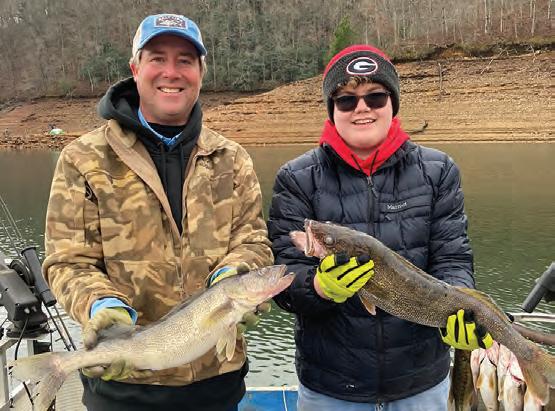
From all of us at Nuts & Bolts of Fishing, we wish you and yours a wonderful holiday season and a very Merry Christmas!
Tight lines and calm seas.

Fishing with guides over the years, a certain type has become my favorite. It’s not the guide who always puts you on feeding fish or corrects your casting technique. Nor is it the fellow who packs gourmet lunches. Simply, it’s the guide who makes the dull spells livelier. With any guide, you will find yourself on water that seems void of fish or with weather that would shut down fish gorging on a hatch just yesterday. So my favorite guide is the one who knows how to entertain a fellow when the fish don’t bite.
I have learned over the years a couple questions to draw out these stories. A while back, I was fishing with a guide in Yaak, Montana. If you have never been there, look at a map of Montana and find the dot farthest up in the northwest corner. That’s Yaak and the dot is drawn to scale. The town, at that time, consisted of a grocery store and two bars. When you
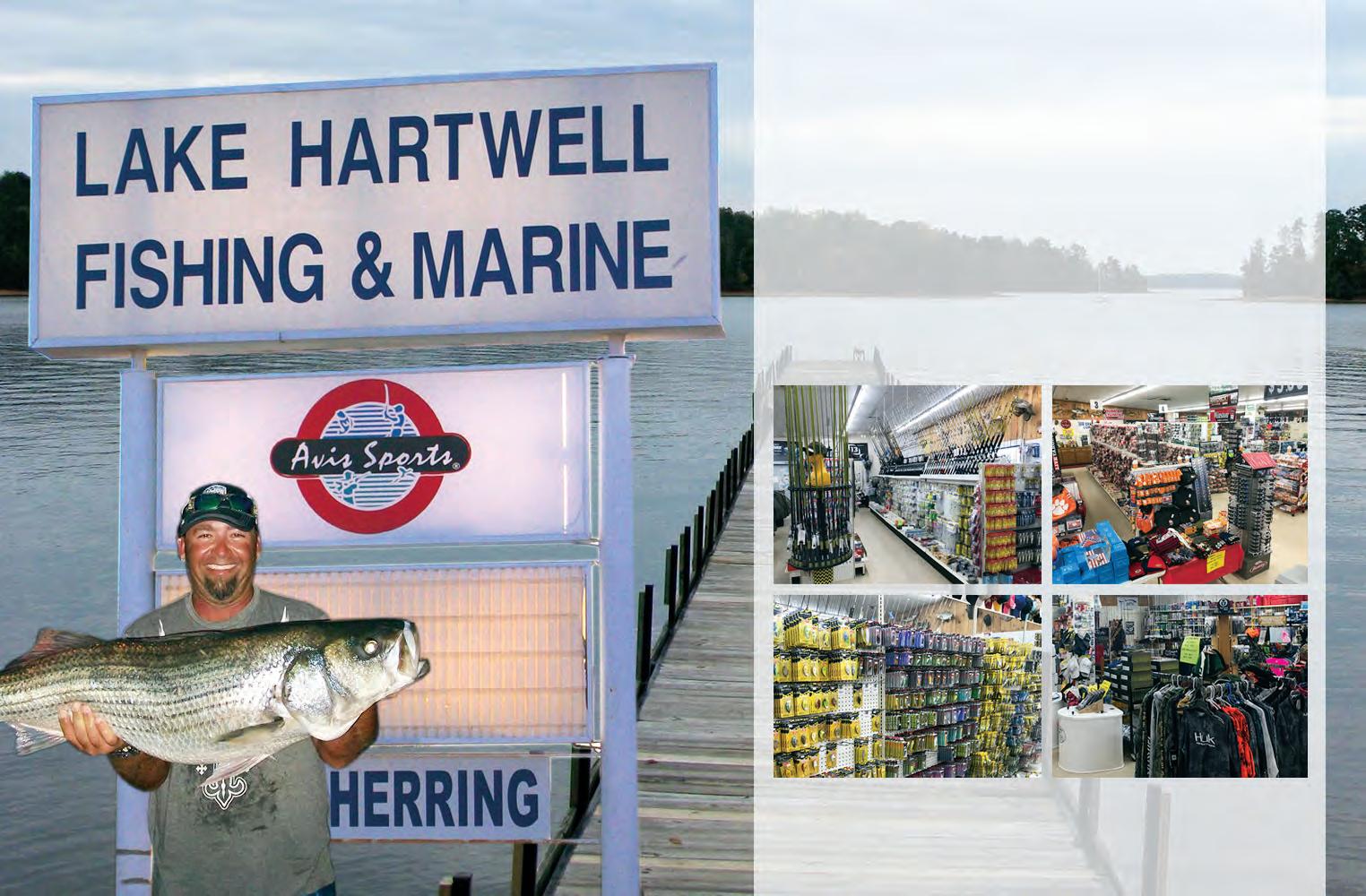
went around a turn you blew your horn in case a logging truck was coming from the other direction. Otherwise, the truck would be using both lanes.
On this trip, I was working on an article on the lodge and needed some photos, so my guide fished along with me whenever I was wielding a camera. He was tough as deer jerky and had sort of a high-mileage mountain look. We had enough truck time between streams for me to ask him a question or two. The one that triggered this story was, “What do you do in the off-season?”
“I trap,” said my partner. “I run a long line in the winter, so I usually do it on horseback.”
“Anything unusual ever happen while you’re trapping?” I asked.
“Well, there was this one time. Every so often, you get something in the trap you don’t expect. It might be a coyote or some animal you don’t bump into every day. As
I walked up to check this trap, I realized I had caught a mountain lion. So I turned around and went back to my horse, got the .22 rifle and dispatched it.”
“But that’s not really the story. You see, my horse hated big cats. Any kind. So I knew I had to fool my horse into carrying this lion back to my cabin. This took some planning. My best idea was to take off my coat and put it over the horse’s head, and then I lashed the lion behind the saddle with both front legs on one side and both back legs swinging over the other.”
“This worked great until I climbed into the saddle and took my coat off his head. That horse turned and looked back at that cat and went four feet straight up. When he did, those cat legs swung out so when the horse landed, cat claws spurred him on both sides. He broke into a dead run.”
“I had yet to put my coat back on and was barely in the saddle
after the jump. So when the horse went into high gear, I rolled off the back of the saddle and my coat hooked on the saddle horn.”
“What did you do then?” I asked.
“It was well below freezing, I had no coat or horse, and several miles between me and home. I nearly froze but I walked all the way back. When I got to my cabin, there stood my horse, steaming hot, with the cat still tied down behind the saddle.”
“Luckily, that’s been the one and only cat I’ve caught trapping. Anyway, if I ever catch another, I know how not to carry it home.”
Having seen the cabin and the pelts that adorn it, the story had more credibility than most. Others make you wonder if you were just told a joke or if the guide is pulling your leg a bit. Like the one I heard on a trip on the coast.
This guide’s story also was triggered with a question during

slack tide and not a fish moving.
“What’s the funniest thing that’s happened to you out here?”
The bearded old salt scratched his chin and gave me a wink. He had Santa’s twinkle in a weathered face that could have belonged to a pirate.

“It had to be those honeymooners I had out several years ago. They had booked this trip with me during their honeymoon. Personally, I could have thought of better things to do on a honeymoon, but, hey, if someone hires me to take them fishing, then I’m taking them fishing.
“That morning, she shows up in a skimpy little bikini that must have come with a magnum bottle of sunscreen. I had asked them what they wanted to catch and all they said was ‘something big’. Both of them were beginners, so I decided to run out to where we’d been finding king mackerel and troll or drift some bait.
“It was summer and hot as a firecracker. She was slathering on sunscreen and pouring down bottles of water. We’d been at it a
few hours and nothing was biting. You’d have thought the fish had left. I noticed that as the day went on, she was beginning to fidget. I knew what her problem was, but let it go on. When she was desperate, she would ask. Finally, she did.”
“Excuse me, but where’s the bathroom on this boat?” she asked.
“I pointed to the stern and said, ‘Right there’.
“Her look of disbelief was exceeded only by her expression of discomfort. I started to feel a little sorry for her, so I told her, “Listen. Here’s what we’ll do. Your husband and I will go up front, I’ll turn on the bilge pump to make some noise, and you just go off the back of the boat. Hang onto the motor and you’ll be just fine.

“So that’s what we did. Both of us guys were up on the bow, that gal was hanging onto the motor like it was her husband, and the bilge pump was drowning out all sounds. Except one. I heard the click of a reel. It was, finally, a bite.
“Now, here I was in a moral dilemma. That young lady was
barely dressed and in an awkward position hanging off the back of the boat. I could ignore the fish and leave her with her dignity. Or I could run back, set the hook, and hand the rod to a woman with no pants.”
He paused at this point, playing the series of events through his memory, mentally lost until I drew him back.
“So what did you do?” I asked.
“That mackerel weighed nearly thirty pounds. Just as I set the hook and handed her the rod, her husband pulled her bikini bottoms up and she played that fish like nothing else was going on. While I was up there thinking through the options, I realized I was paid to be their guide, not protect her modesty. So I did what
“Guide Stories” is an excerpt from Jim’s award-winning book of humor, A Creek Trickles Through It. You can find his books on Amazon or purchase autographed copies at www. acreektricklesthroughit.com.
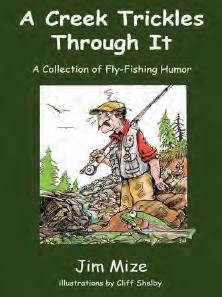
Jim Mize, One-Time Publication Rights, e-mail: jimmize1@cs.com
they paid me to do.
“I will say, though, when we took her picture, her grin was priceless.” Then he cackled, leaving me wondering whether this really happened or he was just filling time.
When the winds blow and the rain pours, and you find yourself huddled up in a truck cab waiting for a break in the weather, you might spring one of these questions on your guide. And it doesn’t matter if what he tells you is true or not. All that matters is that it’s a good story.


With Thanksgiving just around the corner as I write this, it seems to be a good time for reflection on what the outdoors and fishing in particular has meant to me. Raised down east with a family farm pond was a great place to start my appreciation for the outdoors. Moving to the mountains in the 70’s only
increased my love of rivers, lakes, and the glory surrounding the waters. I fished the Tuck as soon as I arrived and worked my way upstream, stopping my Vega occasionally and hitting a spot or two until I reached Tuckasegee. Ken’s grocery had benches out front and there were several locals sitting and I needed help identifying what kind of trout I
had caught. Proudly revealing my haul, one by one peered into the floor of my back seat until all had seen the bounty this flatlander had caught. “Son, that one’s a rainbow and thems browns and them two’s the best of the lot, horny head trout.” I had read about trout in Field and Stream but couldn’t recall ever hearing about horny head trout. When they all three finally busted out laughing, I understood the lesson. The real glory surrounding the waters here is its people. I have some really great friends; most have shared either boat or riverside seats. We have discovered new places, new methods, and changes in the habits, locations, and preferences of our little finny friends. I talk almost every morning with one of
my buddies and even if I haven’t been on the water because of work or other worldly distractions, I always know where to find the hottest bite. Sharing is a big part of the make-up of folks here and along with humor, is one of my favorite traits.
Anyway....as for fishing now, the water is still warm and turnover wasn’t very severe and is past now so the bite on Fontana has really turned on. Spotted bass are all over the place. Work topwater and jerkbaits shallow, ice jigs and keitechs deep; whatever method is your favorite will work now. Be safe, enjoy our beautiful area and its people and give me a call if you want to explore something I have grown to love. Thank you Lord, Later, Capt James.
Capt. James McManus owns 153 Charters. Give him a call for a great day on the water at (828) 421-8125.


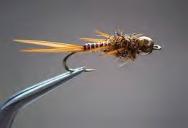
 By Tom Adams and Alen Baker
By Tom Adams and Alen Baker
This is an easy fly pattern to tie – much like the Copper John. The abdomen ribbing effect comes from using two colors of fine colored wire, one bright color and one a contrasting dark color. The thorax is dubbed. Goose biots provide the forked tail and two legs on each side of the thorax. A bead head is prescribed but may be omitted if some underbody of substitute lead is used for weighting under the thorax. The two wires provide some weight regardless.
Actual stonefly nymphs are typically, black, brown or rusty brown, and golden or tan in larger siz-es (4-12) as well as black, yellow, and green in smaller sizes (14-18). For example, a Black Two Wired Stonefly Nymph may have an abdomen ribbed with hot orange wire and black wire; UTC medium. The tiny winter black stonefly nymphs would be imitated with UTC small wire of the same colors. A Brown Two
Wired Stonefly Nymph may have an abdomen ribbed with silver wire and amber or rust wire; UTC medium. A Golden Two Wired Stonefly Nymph may have an abdo-men ribbed with hot yellow wire and copper wire; UTC medium. The little yellow and little green stonefly nymphs would be imitated with UTC small wire of the same colors as the larger golden stonefly.
The amount of weight determines how fast the nymph fly pattern will sink toward the bottom. The slowest rate may be achieved by omitting the bead and depending only on the two wires of the ab-domen. The fastest rate may be achieved with a tungsten bead. White goose biots may be used to make the nymph fly pattern stand out on a dark bottom but typically the goose biots color is natu-rally matched to the color of the nymph.
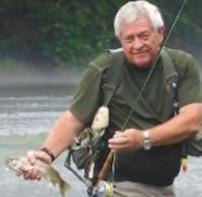
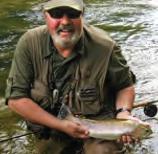
In North Carolina mountain streams, the golden stonefly
nymph is highly effective, thus the hot yellow and copper wire combination is a good choice.


Two Wired Stonefly Nymph
Hook: Nymph hook
Size: 6,8,10,12,14,16
Thread: 8/0 to match body Tail: Goose Biots to match pattern Abdomen: Two alternate colors of UTC wire to match pattern
Wings: Goose Biots to match pattern
Thorax Dub: Buggy to match pattern
Directions: Detailed tying steps may be found at the Rocky River Chapter of Trout Unlimited at www.rockyrivertu.org/dry-flypatterns.html.
 By Shane Goebel
By Shane Goebel
Are you looking for a fight with the hardest hitting fresh water fish around?
If so, winter striper fishing in Western North Carolina is for you. These are by far the most wicked, fighting freshwater fish around, and we are very fortunate to have several area lakes stocked with these monster fish. December and January are some of the best months for having your opportunity to land some of our 30 to 50 pound stripers. So, after opening all those Christmas gifts, come get your fish on with Lake Nottely and Lake Hiwassee’s #1 striper guide service, Big Ol’ Fish Guiding Service.
Also, remember all of our Christmas gift certificates are only $300. That’s a savings of $100. They make a perfect Christmas gift and can be used anytime. Sale
ends January 1st. Check out our Facebook page or www.bigolfish. com for more details.
Lake Hiwassee is currently about 26 feet below full pool. Water temps are still in the lower 60’s. Lake clarity is clear and stained in the backs of creeks.
Striper fishing has been extremely excellent lately. The big boys are really starting to feed. We’ve been catching tons of 1530 pound fish every morning in all of our boats. These fish are still schooling up and headed towards shallow humps and into the creeks. Look for these big stripers anywhere around the lake; however, most of our fish are being caught in the mouths and backs of creeks. This is a great time of year to start using bigger bait. Start off by pulling planer boards and free-lines early in

the morning. Live bluebacks and gizzard shad are working best. Top water bite has been wickedgood and should be getting even better as the water continues to cool, so as you’re pulling baits, keep a Red Fin or a spook tied on and work those banks and points. As the sun comes up and the day gets warmer, the fish will move a little deeper. Switch to down lines and weighted free lines. Remember, this is the time of year to keep an eye out for seagulls. Where there are birds, there is bait, and where there is bait, there are fish.
We want to wish everyone out there a Merry Christmas and a Happy New Year. Thanks
for an awesome year of fishing, and we hope to see you again in 2023. Remember, December is a fantastic month for catching a lot of stripers on this beautiful mountain lake. Give Big Ol’ Fish Guiding Service a call and let the area’s #1 rated guide service put you on some of Lake Hiwassee’s best trophy stripers during the fishing trip of a lifetime. We are Murphy NC’s only premier fulltime guide service, specializing in striped and hybrid bass. We also serve Lakes Nottely and Chatuge (in North Carolina), and Lake Apalachia. So, come fish with the pros for the opportunity to be featured in Angler Magazine, and let us help you get your fish on!
continued from page 18
higher and the temperatures are colder.
As the holidays are upon us, the “river crowd” tends to be a little less than usual, as many folks are shopping and attending holiday festivities. We have found that, even on a Saturday or Sunday, folks can have a great day on the river without having difficulty

finding a great spot to fish.
From all of us here at Chattooga River Fly Shop we want to wish everyone and their families a Merry Christmas and a Happy New Year! We look forward to seeing everyone out on the rivers, and always remember, “Leave No Trace” out there.
Karl and Karen Ekberg are co-owners of Chattooga River Fly Shop, located at 6832-A Highlands Hwy, Mountain Rest, SC 29664. Give them a call at (864) 638-2806 and visit their website at www.chattoogariverflyshop.com.

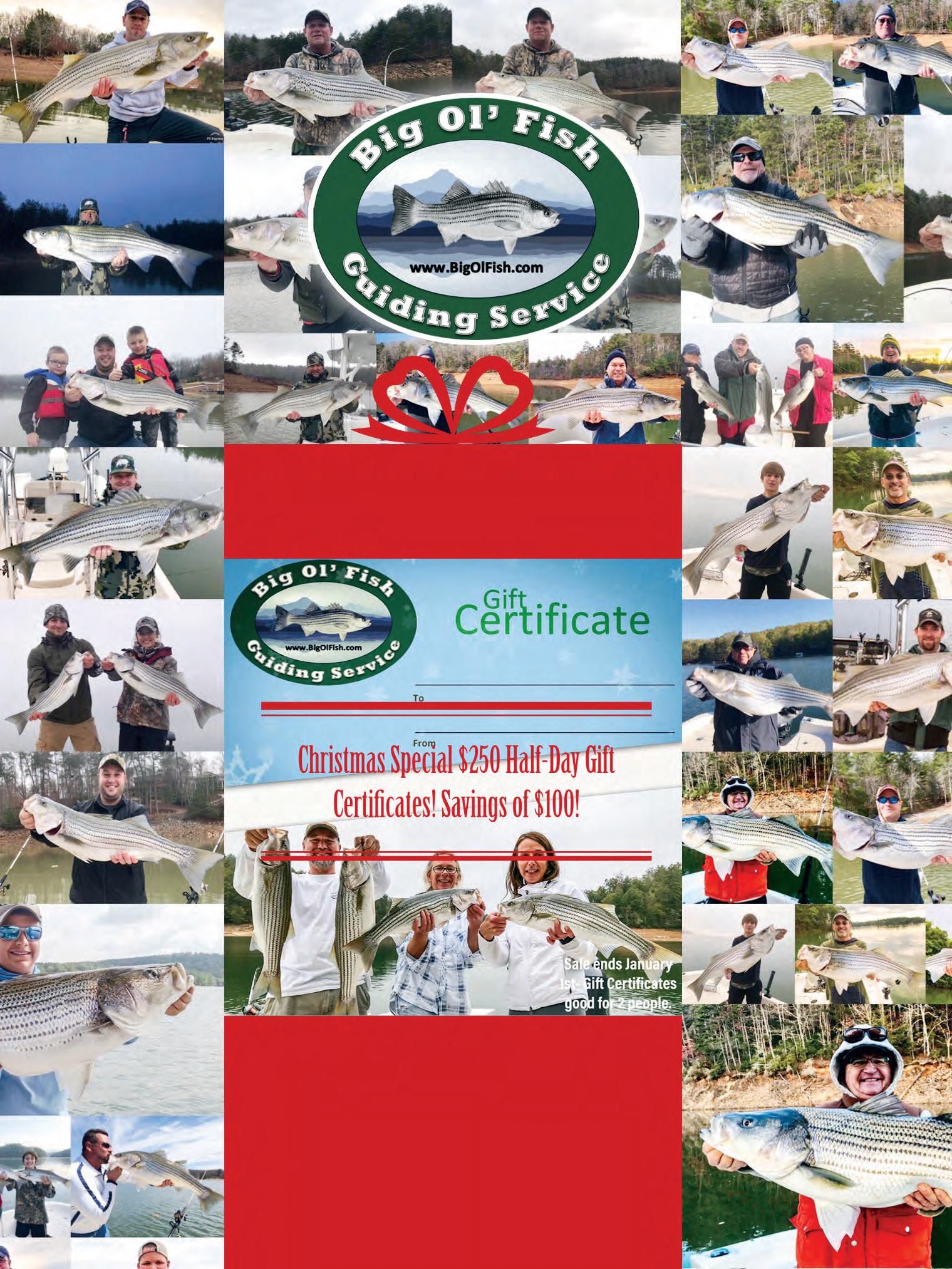

Brayden Madison may still be a young fisherman, but he has amassed a rather large collection of trophy fish from both Freshwater and Saltwater and has numerous awards from the State of Florida regarding trophy catches. He was born a Tennessean but relocated to Florida. Fishing runs deep in his veins, and he has a deep understanding of fishing along with a desire to target multiple species. This year, he chose to target Rainbow trout on his vacation and what better place to do it than where his fishing adventures began in his home State of Tennessee. The first action for planning out this adventure was to utilize the best tool available to the Fisherman of today...The Internet. The Internet has a wealth of information and resources when it comes to targeting a species of fish. To name a few: Aerial views of the waterways, topo and depth charts, fish information, including habitat and forage info, and local
catches recorded identifying size and location to get a good sampling of what is being caught and where.

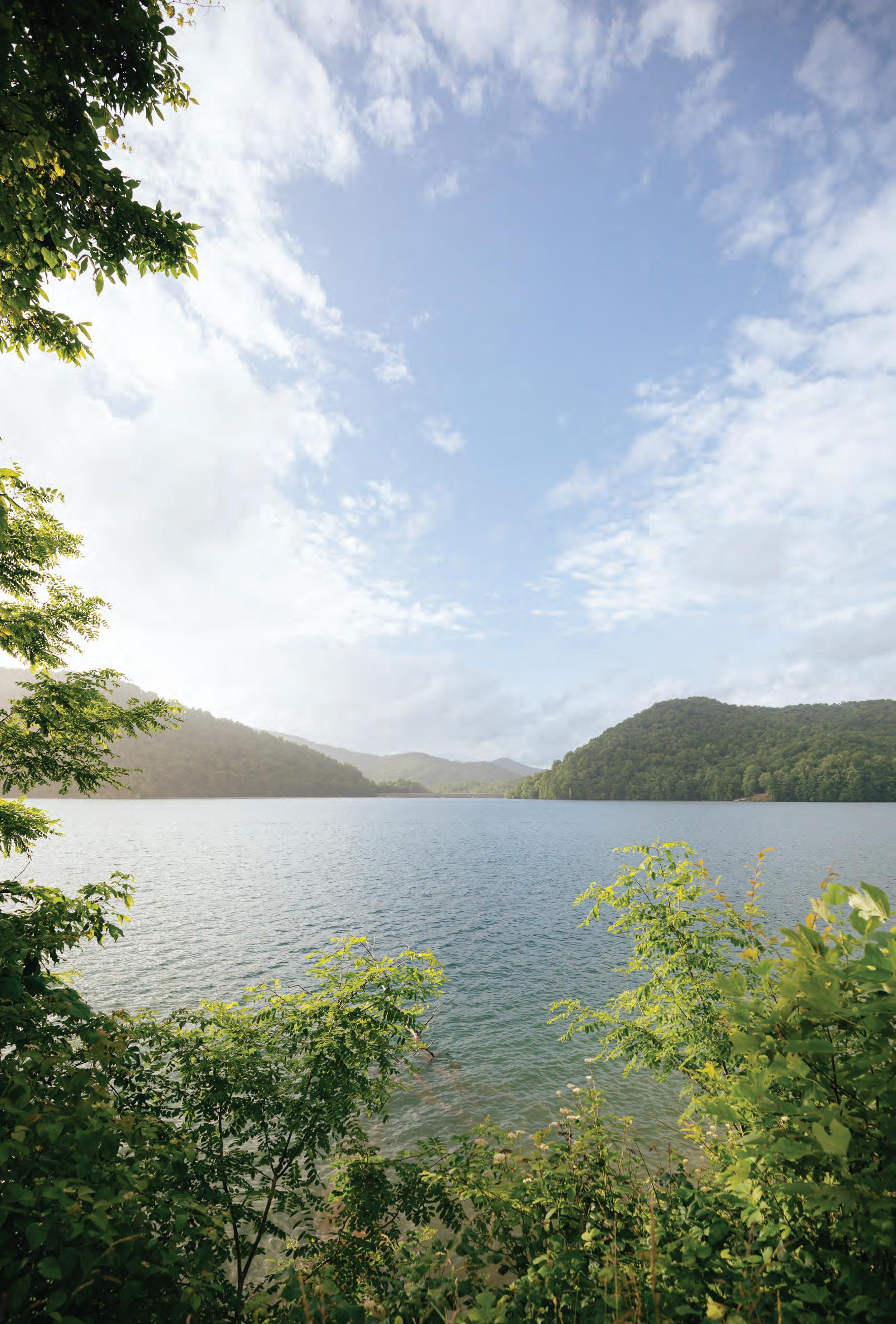
Step one had already been chosen and confirmed - Target Species “Rainbow Trout”. After spending a few hours studying the Rainbow trout and its habits, Brayden moved on to the local postings regarding catches and locations. After viewing the satellite views and marking off some prime spots that were likely to hold some larger trout that had avoided being caught for some time after stocking, he was ready for his trip. Upon arriving in Pigeon Forge, he shopped for a few local varieties of lures that he didn’t already have.
Thanks to the preplanning, the first day out to the Little Pigeon River proved to be successful. After picking up some smaller stock size trout on a flyrod, he decided to try his luck on some of the other spinner lures he had
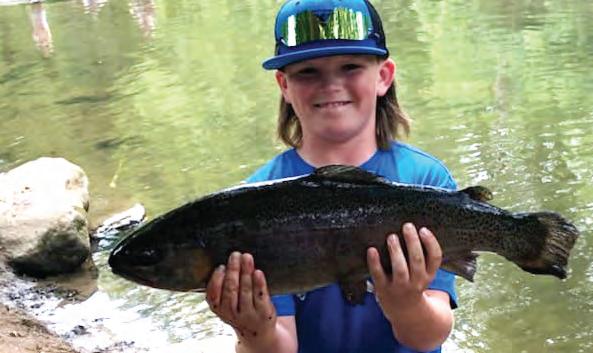
bought locally. He followed the river to a deeper hole that had some eddies just on the edge. It was tough to get to, but this sweetened the deal, because if it was hard to get to for him that means it was for anyone else too. These are the areas that receive less fishing pressure and hold the larger fish. As soon as he was in position to make a cast, he viewed what looked to be two large rainbow trout swimming side by side just off the edge of the eddy. Cast after cast, lure after lure, he would pull the lures right by them, sometimes
bumping them in the face trying to promote even the smallest of strikes. Although he had caught several nice trout this day, these large trout were what he had set out to catch. Being persistent he tried several lures and nothing, so he sat on a rock and just observed them for about an hour watching their every move. They would lay back in the slack water swimming slowly and then would get to the end of the pool of water and then dart up into the rushing eddy as thought they were feeding on something and then return to the


Hey folks, hope everyone is doing well! December is finally here and in my opinion, given the declining numbers of walleye over the last few years, this is probably the best time to catch a nice limit of fat walleye. Reason being, they are going to be bunched up feeding on threadfin and migrating to spawning areas.

These fish are interested in one thing and that’s fattening up for the spawn. Walleye at this time tend to be 70 to 95 ft deep but occasionally, will be as shallow as 40 ft. I’m a troller so I have the ability to cover large sections of water ‘till I find what I’m looking for. Also, trolling allows me to fish multiple depths. Lures tend to vary but spoons are
very hard to beat Alabama rigs, Rapalas, flicker shads, and Shad Raps are all good choices. Since the fish are feeding mostly on threadfin, I try to match the hatch, so to speak. Every once in a while, I will find them on bluebacks and in this case, I will run my bigger lures just to match what they’re eating.
Almost always, I will catch nice spotted and smallmouth bass feeding above the walleye. White bass will tend to be there too but they will usually be 15 to 20 ft shallower than the walleye. On the up note, I have recently caught and heard of being caught by other anglers, a few small walleye which have been absent for a few years. Not sure if the small ones are some that the WRC has stocked or some that have evaded the bluebacks
long enough to grow too big for them to eat.
A lot of my buddies love to vertical jig for the walleye at this time and that works great too. Whether you troll or jig when you catch one from these depths, it’s gonna’ blow their swim bladder and they can’t be released, so please stop fishing when you get your limits. Some say you can vent them and they will survive but I’m skeptical. Walleye are a fickle fish and don’t deal with being handled well. This tends to be a cold windy time to be on the water, so it may not be the best time to take kids. Remember to bundle up in layers and you should be fine. This is a great time of year for fishing and family, so enjoy the holidays and the great fishing. As always, take a kid fishing!
Ronnie Parris is owner and head guide of Smoky Mountain Outdoors Unlimited-Fontana Lake Fishing Guides, headquartered in Bryson City, N.C., heart of the Great Smoky Mountains www.smounlimited.com; (828) 488-9711.
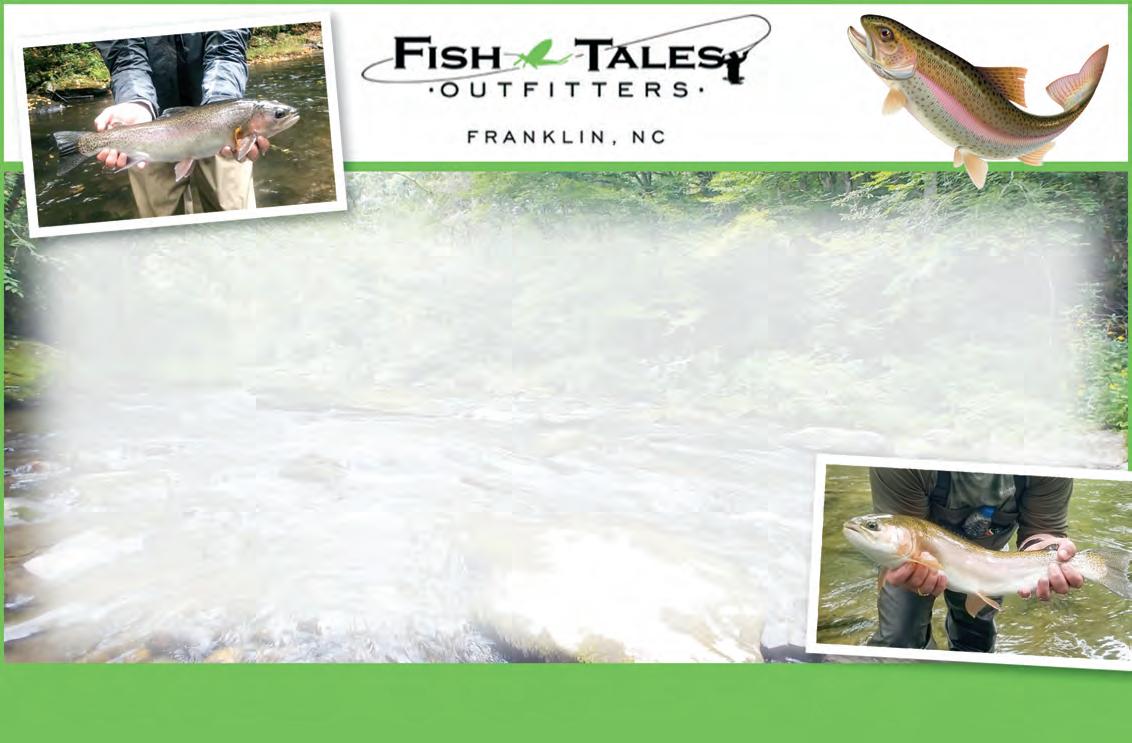


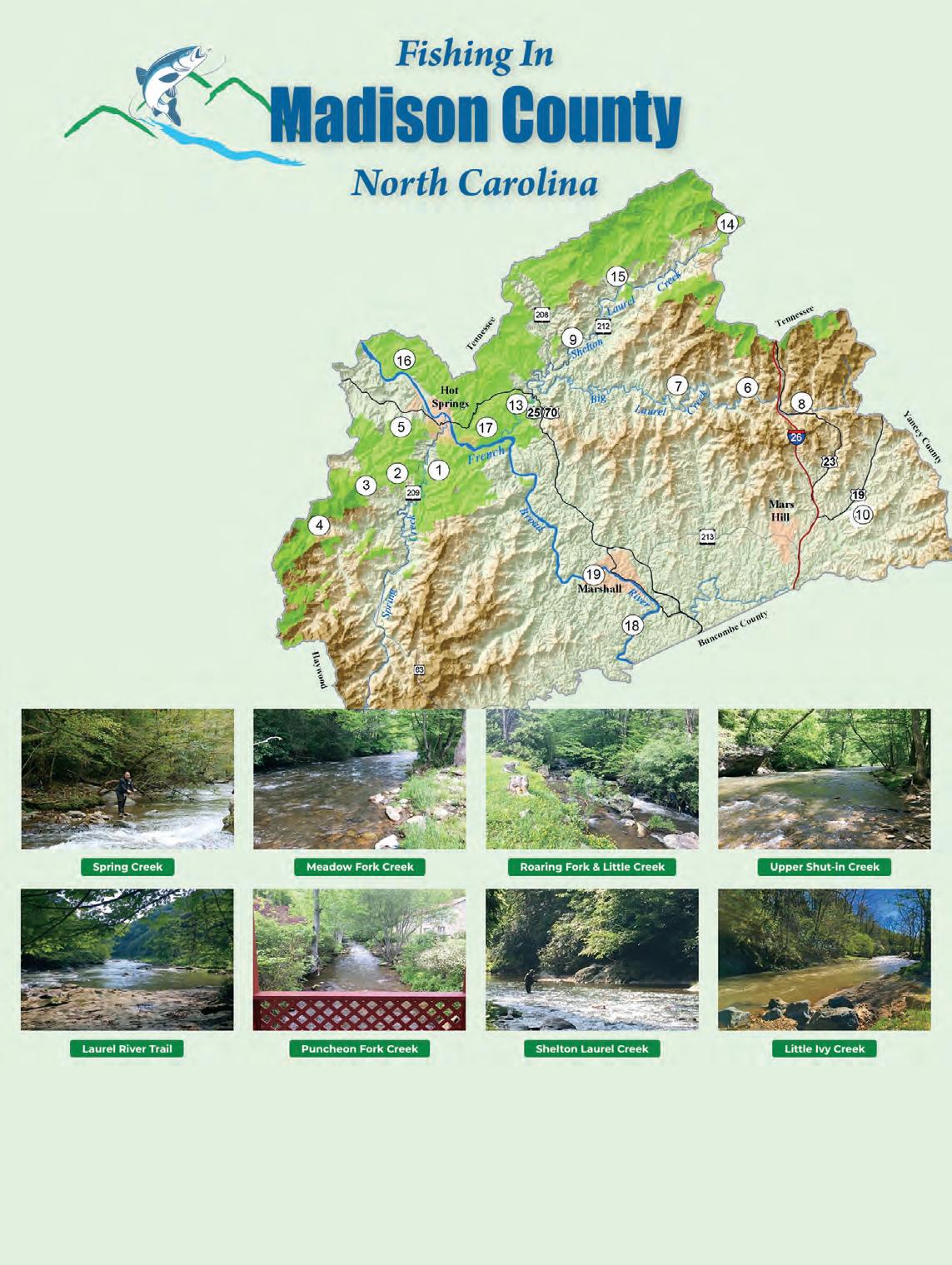
slack of the deeper pool. He had one Rooster Tail with a light green skirt that he had not tried, so he tied it on and climbed up and down the rocks until he reached the upstream end of the pool. He could still see the trout swimming and just as they entered the swift current, he threw just beyond them and pulled the rooster tail pass them, immediately the smaller of the two engulfed the rooster tail and the fight was on. Once the fish was landed it was quickly weighed at return to the water. His first six plus pound Rainbow. But he knew he wasn’t through until he landed the big one still swimming. Several more casts yielded nothing. But he stuck with it and the fish repeated his tracks once again, and after about 30 minutes he was in the current again and this time Brayden tried a different technique, instead of throwing past him and then retrieving. He cast to a spot where the fish had passed over time and time again, and kept his line tight with his lure
resting on the bottom. As the fish moved toward the lure and was about a foot away, he popped the rod tip and sent the lure from the bottom into action provoking a strike... “Fish On!” Brayden yelled, you could feel the excitement in the air as he landed a nine plus pound Rainbow trout. It was his personal best and one that will be logged in his book of catches. The fish was photographed and quickly released to fight another day.
After talking to a lot of the locals, a Rainbow trout that size was few and far between in this area. I encourage old and young alike to do a little preplanning, come prepared, and be patient and you may very well end your day with your personal best. The Smokies offer some great outdoor experiences in both fishing and nature observing, so get out and make some memories today, that’s what it’s all about!





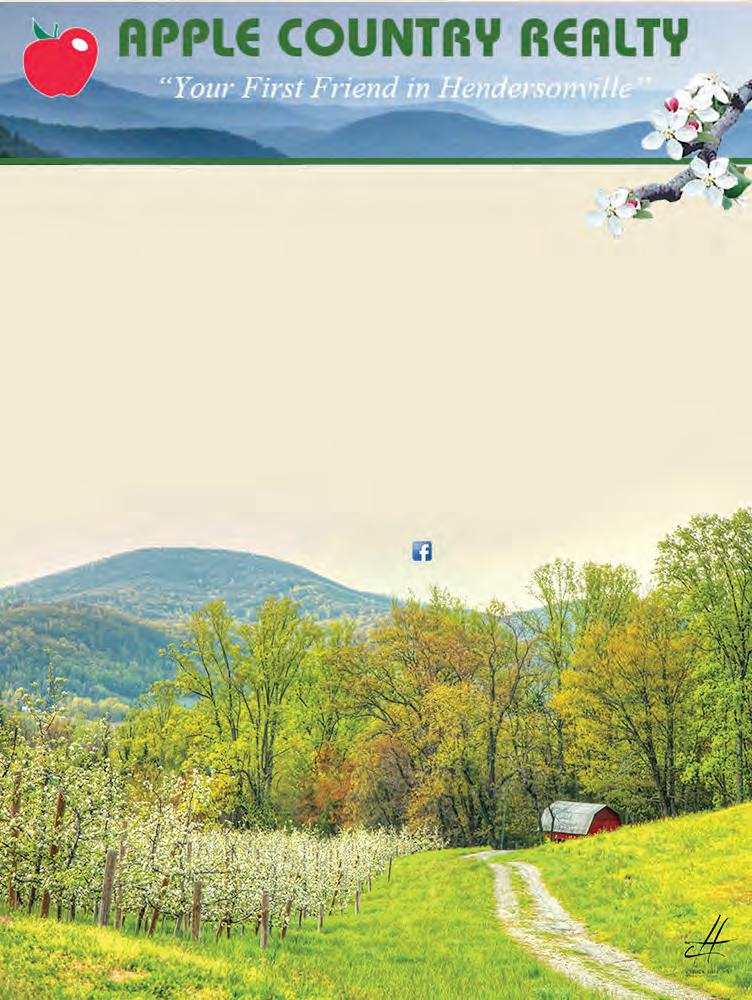


Brayden said he left those fish for you, So now it’s your turn...get out there!

The very best hunting knives possess a perfect balance of form and function. They’re carefully constructed from fine materials, but also have that little something extra to connect the owner with nature. If you’re on the hunt for a knife that combines impeccable craftsmanship with a sense of wonder, the $79 Huntsman Blade is the trophy you’re looking for.
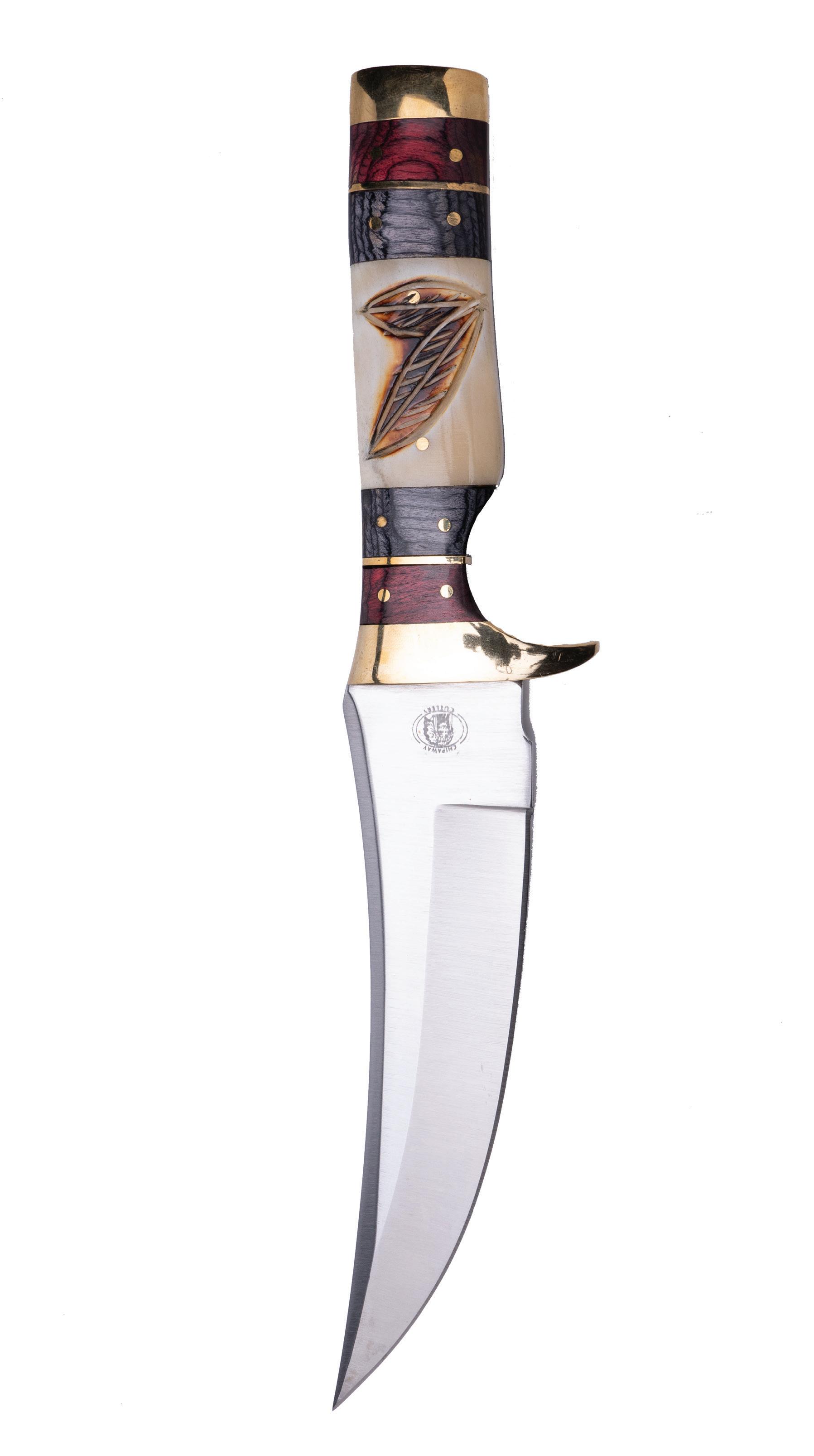

The blade is full tang, meaning it doesn’t stop at the handle but extends to the length of the grip for the ultimate in strength. The blade is made from 420 surgical steel, famed for its sharpness and its resistance to corrosion.
The handle is made from genuine natural bone, and features decorative wood spacers and a hand-carved motif of two overlapping feathers— a reminder for you to respect and connect with the natural world.




This fusion of substance and style can garner a high price tag out in the marketplace. In fact, we found full tang, stainless steel blades with bone handles in excess of $2,000. Well, that won’t cut it around here. We have mastered the hunt for the best deal, and in turn pass the spoils on to our customers.
But we don’t stop there. While supplies last, we’ll include a pair of $99 8x21 power compact binoculars and a genuine leather sheath FREE when you purchase the Huntsman Blade.


Your satisfaction is 100% guaranteed. Feel the knife in your hands, wear it on your hip, inspect the impeccable craftsmanship. If you don’t feel like we cut you a fair deal, send it back within 30 days for a complete refund of the item price.
Limited Reserves. A deal like this won’t last long. We have only 1120 Huntsman Blades for this ad only. Don’t let this beauty slip through your fingers. Call today!
“This knife is beautiful!” — J., La Crescent, MN
“The feel of this knife is unbelievable...this is an incredibly fine instrument.” — H., Arvada, CO
The question of lure size is o en pondered in the shing world. Di erent circumstance requires a di erent mentality, but one thing is for certain, the sh did not read any articles, attend any seminars or watch that YouTube video. ey eat what they want, when they want, but I have an approach that I nd useful in deciphering the riddle.
As winter approaches, it brings changes to our estuaries: cooler water temps, a change in the type and abundance of forage, less pressure from boaters, and in some areas, much better water clarity. ere are two trains of thought on lure size when it comes to winter shing in the bays. Should I go bigger or smaller? I know anglers who immediately upsize for the entire season, while others downsize for its duration.














Both can be e ective, but here is how I typically tackle early winter shing.
Cooling water temps and increasing frequency of cold fronts put the sh on both spectrums of the feeding attitude. Unlike more stable weather patterns, when sh are less a ected and feed more consistently, these fronts can make them, for a lack of a better term, moody.







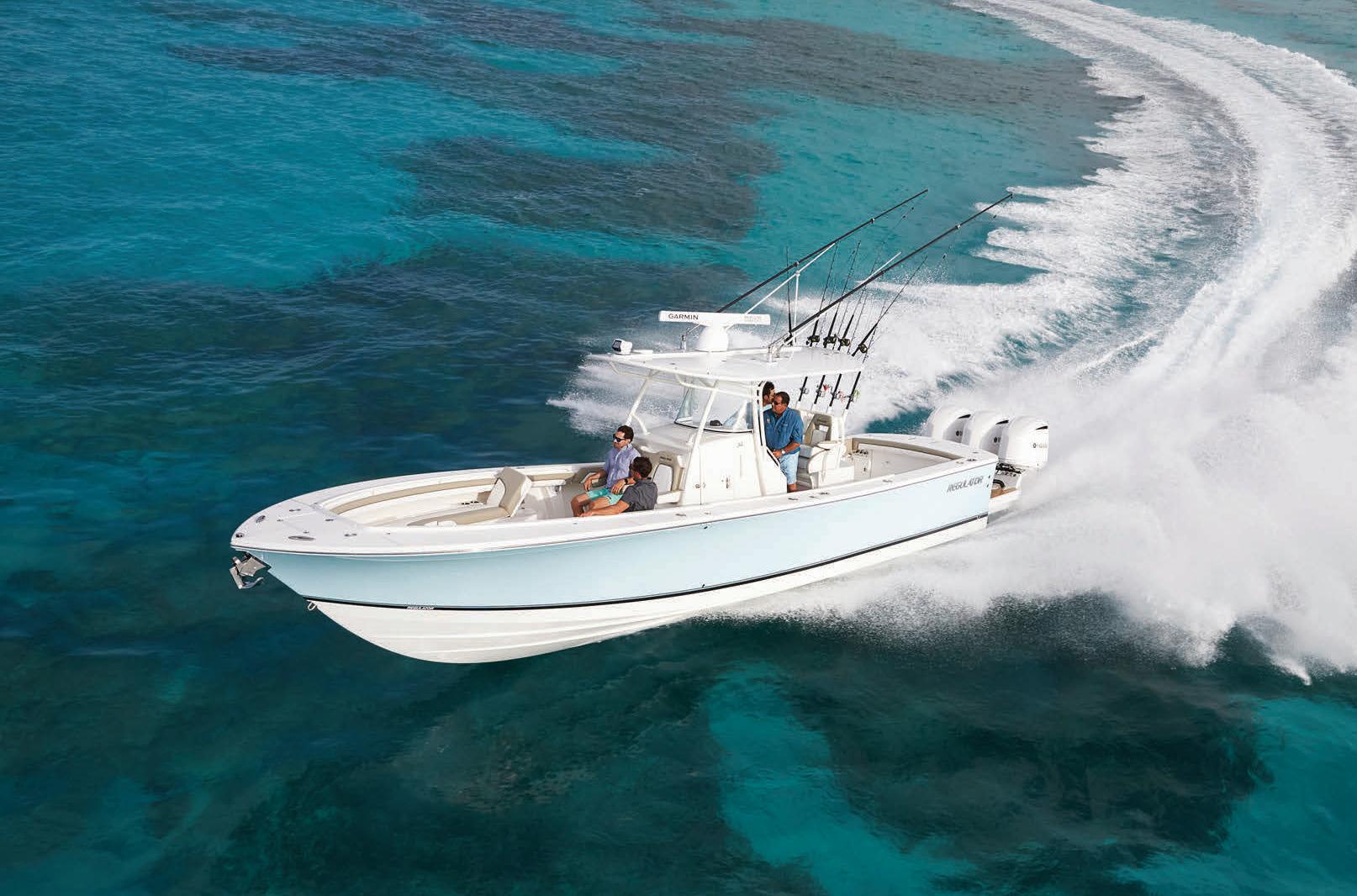
Late fall and early winter can be some of the best inshore shing of the year. Schools of
bait ushed from the bays with the dropping tides are followed by hungry specks and reds. In these situations, I like to use a smaller lure. Generally, they feed on shrimp or smaller bait sh, and having a lure of similar size is a good idea. When they are following these schools, I like non-natural colors so the sh have something to key in on when bait is abundant. I like my lure’s color to stand out in the fall feeding frenzy.
Now, for the other end of the mood swing, the inactive period caused by post-frontal conditions. is is another situation when I favor smaller lures in early winter. When the bite is o , smaller o erings entice bites from non-aggressive sh. Using myself as an example, if I am not hungry, the chance of me driving to a restaurant for a steak dinner are slim, but I might grab a few peanuts for a quick bite just because they are on the counter.
e nal reason is clearer water. Some bays I sh will have 1 to 2 feet of clear-green water in the summer, but 6 to 7 feet of air-clear water in winter. ese sh are not accustomed to this transitional clarity. When I can see my lure bouncing in the sand in depths of 7 feet, a much smaller lure will produce more bites.
I hope these tips help you catch more sh this winter, and next month I will explain my transition to larger lures as we press deeper into winter’s grip.
ago, Persians, Tibetans and Mayans considered turquoise a gemstone of the heavens, believing the striking blue stones were sacred pieces of sky. Today, the rarest and most valuable turquoise is found in the American Southwest–– but the future of the blue beauty is unclear.
On a recent trip to Tucson, we spoke with fourth generation turquoise traders who explained that less than five percent of turquoise mined worldwide can be set into jewelry and only about twenty mines in the Southwest supply gem-quality turquoise. Once a thriving industry, many Southwest mines have run dry and are now closed.

We found a limited supply of turquoise from Arizona and purchased it for our Sedona Turquoise Collection . Inspired by the work of those ancient craftsmen and designed to showcase the exceptional blue stone, each stabilized vibrant cabochon features a unique, one-of-a-kind matrix surrounded in Bali metalwork. You could drop over $1,200 on a turquoise pendant, or you could secure 26 carats of genuine Arizona turquoise for just $99

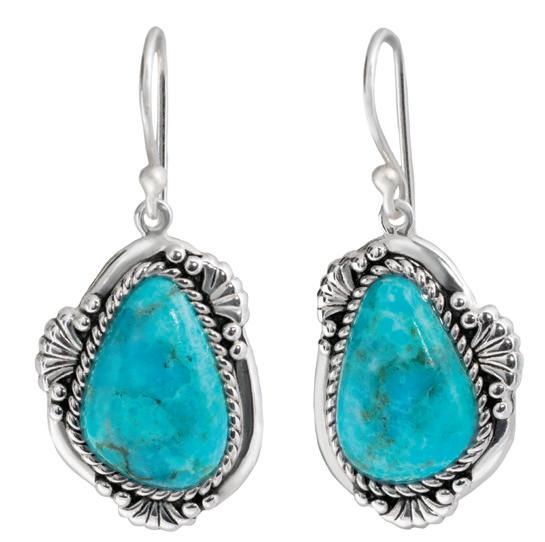


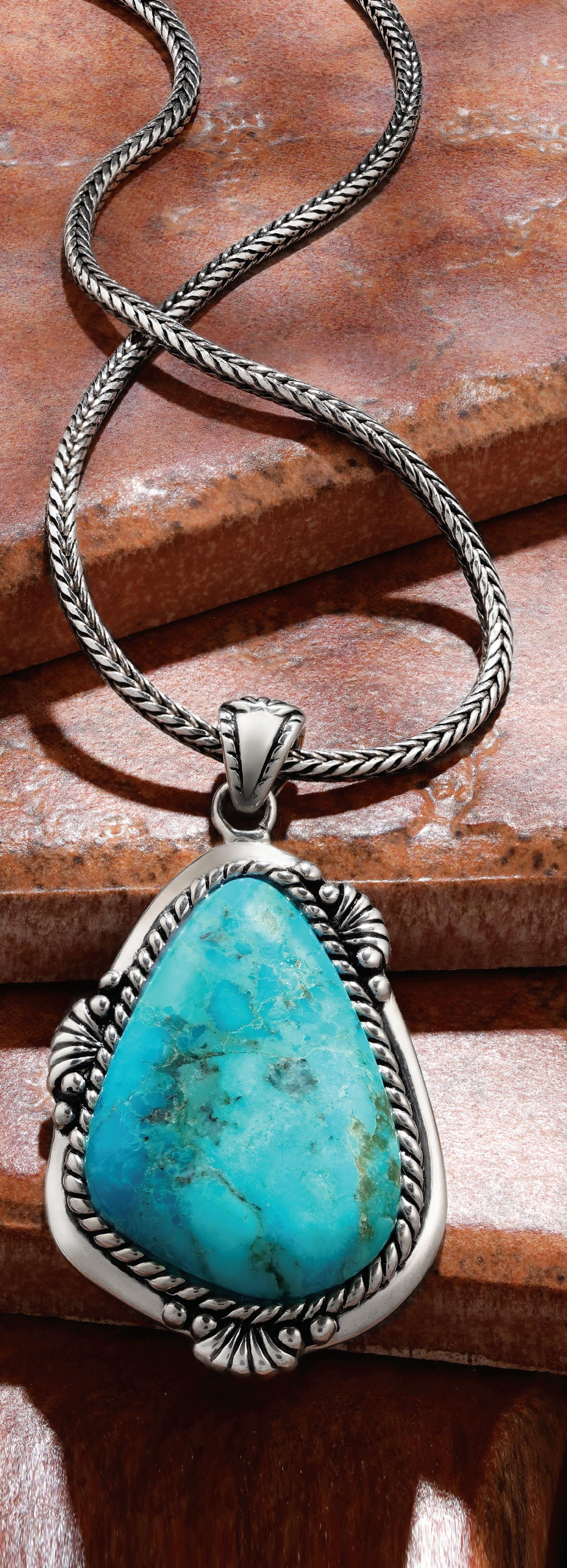
days
don’t
Ohio Angler Gregg Gallagher caught a 10.15-pound smallmouth bass on Nov. 3 that once certi ed should be a new Lake Erie record. e 23 ¾-inch sh is also the largest bronzeback ever caught from the Great Lakes.
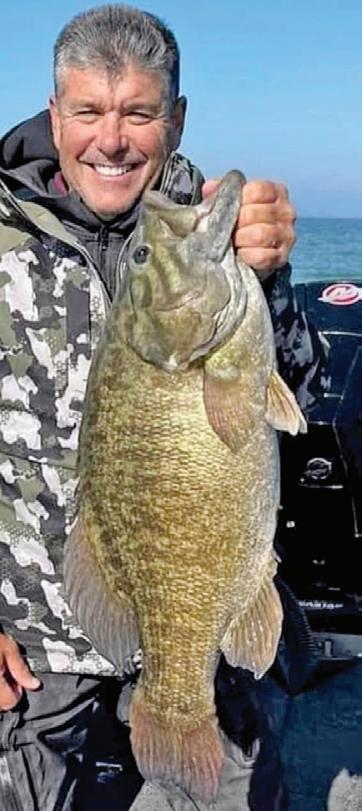





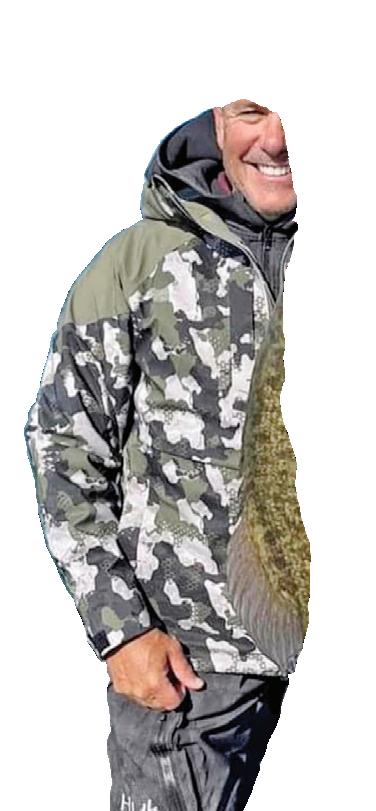
Gallagher told In-Fisherman his was the result of his son’s extensive time surveying bait and bottom structure. With sonar, they were able to do what some call video-game shing and target individual sh with drop shot rigs. He was shing 8-pound test.
“With an abundance of bait sh and unique bottom composition located a er long days behind the graphs, we dropped down our forward-facing sonar and we were able to individually target these pelagicesque smallmouth,” he told In-Fisherman. “On what turned out to be the most memorable cast of my life, my bait got hit before it even hit the bottom and my rod quickly doubled over. I honestly thought I had hooked into a sheephead and not a smallmouth. We quickly learned we had just caught the smallmouth of a lifetime.”
e monster smallmouth is the only certi ed 10-plus-pounder ever caught from the Great Lakes. It should beat out the Canadian record of 9.84 pounds, which was set 68 years ago. It is also heavier than the Ohio state record, which weighed 9 pounds, 8 ounces and was caught in 1993.
e world record smallmouth bass weighed 11 pounds, 15 ounces. It was caught from Tennessee’s Dale Hollow Lake in 1955.
You raise the flags of the fish just caught to show you weren’t skunked.
Once onshore you can take it a step further showing your fellow anglers your catch of the day wearing “slippahs” from Scott Hawaii.
Instead of spending the next few months holed up inside, get yourself a good parka, nd a window of decent weather and go shing. Believe it or not, for some sheries winter o ers some of the best action of the year. Here are a few ideas to help you combat cabin fever.
By CAM Stais time of year, wahoo pile up around the Bahamas. Some of the largest sh of the year will show up over the next couple of months.
High-speed trolling is the technique that allows captains to cover lots of water along rocky ledges, color changes, temperature breaks and dropo s. ’Hoos hunt in packs, so multiple hook-ups and double-digit days are possible. is shery requires some forethought and perhaps some exibility. ey bite best around the full and new moons, but you’ll de nitely want to avoid fronts and those wicked north winds.

December







the Atlantic Coast of South Florida becomes one of the best sail sh destinations in the world. Release ags will be ying along the edge of the Gulf Stream from roughly Fort Pierce down through the Keys.
For this bite, you’ll want to sh when the weather’s a little rough. With strong winds from the north, tailing conditions push sail sh high in the water column to feed. ey surf the swells and it’s possible to sight sh for them, which is about as exciting as shing gets.
3) The Outer Banks: In winter, North Carolina’s Outer Banks are the destination for several migrations which bring excellent shing to the island chain from Oregon Inlet down past Ocracoke.
Out of Hatteras, it’s a short ride out to the edge of the Gulf Stream, and this time of year tuna congregate there to feast on a bounty of bait sh. Big blue n tuna 200 pounds and larger are on the prowl, and anglers can also do battle with black n, yellow n and bigeye tunas.
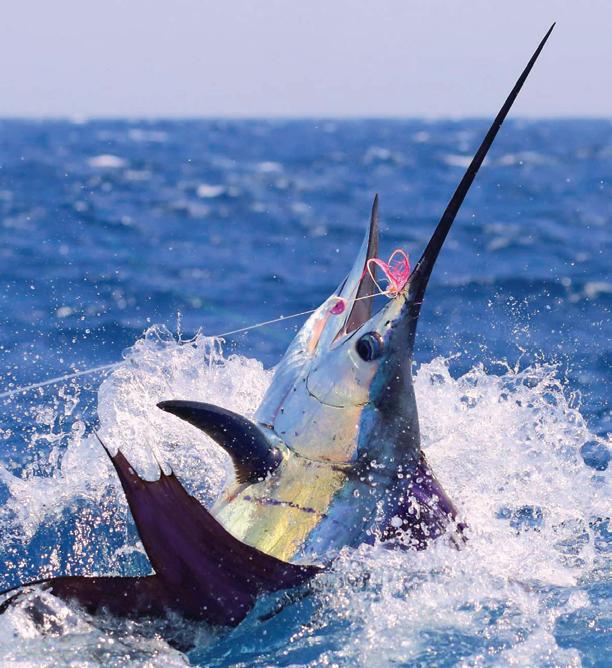
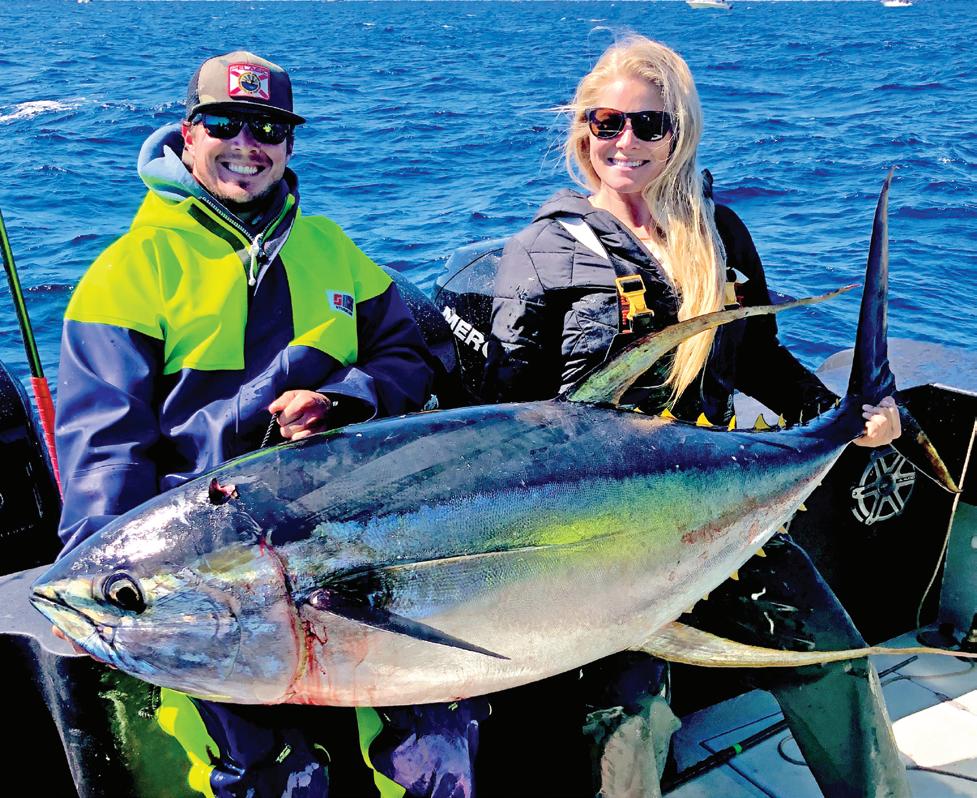


At the same time, big schools of striped bass will be marauding bait sh on the beaches and in the inlets. Surf anglers can encounter them blitzing menhaden by looking for bait and birds. Charter boats do good business this time of year trolling while keeping eyes peeled for stripers herding and crashing bait balls.
4) South Padre Island, Texas: Way down on the Mexican border, South Padre Island is as far south as you can go in Texas. e winters are mild and the shing is good year-round.
When water temps drop, snook pile into the canals and school up. ese schools of sh can be giant, and they are suckers for arti cials. At the same time, the grass ats experience the clearest water of the year. Red sh, big trout and black drum cruise the ats, where anglers can sight sh them in shin-deep water.

5) Delayed Harvest Trout: On the East Coast from Maryland down to Georgia, most states have developed robust delayed harvest trout sheries which keep y shers on the stream through the winter. ese specially regulated sheries are catch-and-release only through the cooler months and most of them have single-hook, arti cial-only regulations.
Most delayed harvest streams are heavily stocked, usually with some largerthan-normal hatchery sh. Since you can’t keep them, they stay in the creeks and rivers all winter long. Maryland, Pennsylvania, North Carolina, South Carolina and Georgia are some of the states with excellent delayed harvest programs. See the state wildlife agency websites for information.
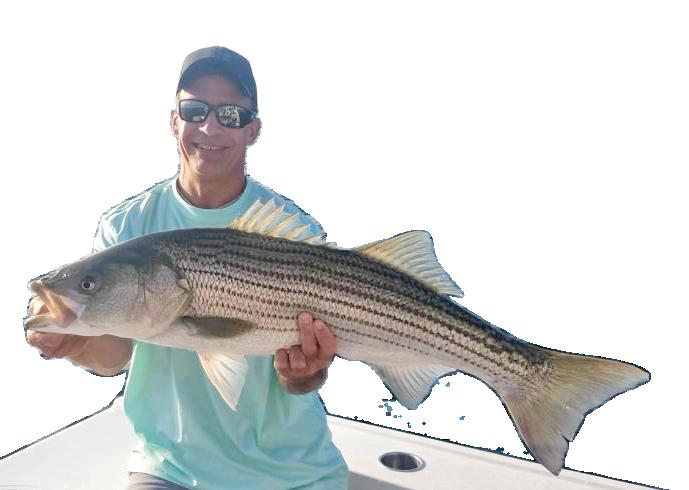
For the rst time in a while, sheries managers are reporting some good news about striped bass populations on the Atlantic Coast. In early November, e Atlantic States Marine Fisheries Commission (ASMFC) accepted an updated 2022 stock assessment that looks good enough that no additional harvest cuts will be needed.
is stock assessment found that rock sh stocks are still over shed but they are not currently experiencing over shing. e female spawning biomass appears to have been on a modest upward trend for at least the last three years, but at an estimated 143 million pounds is still far below the 235-million-pound target for rebuilding.
Total mortality in 2021 from commercial and recreational shing was estimated at 0.14, which is below the mortality threshold of 0.20 as well as below the mortality target of 0.17.
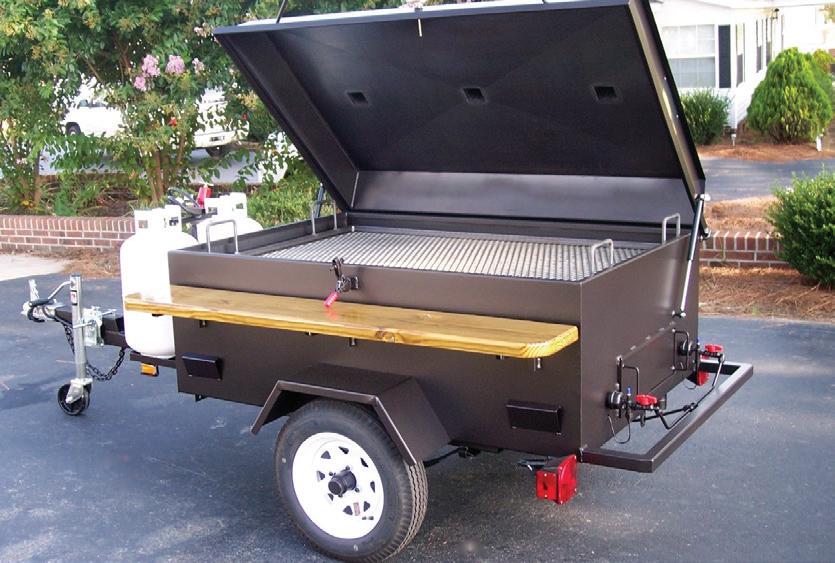

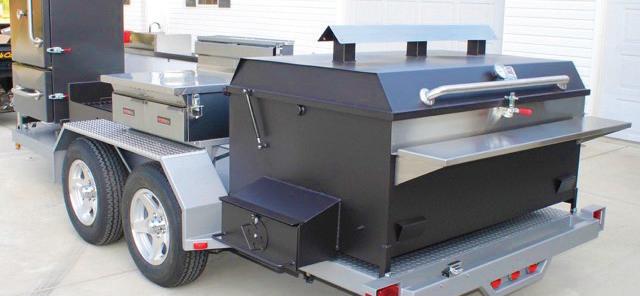


What does this mean for anglers?

Currently, a reduction in catch is not needed, and the rebuilding program is on schedule to declare the striped bass stock rebuilt by 2029.
“ is 2022 assessment was the rst check-in point for progress toward stock rebuilding by 2029,” said Board Chair Marty Gary with the River Fisheries Commission. “It is extremely important shery removals and conduct regular stock assessments to keep evaluating rebuilding progress and stay on track.”


e next stock assessment update is scheduled for 2024, and the Board will review the 2022 removals as soon as the data are available to evaluate whether catch remains at sustainable levels.
For more information, visit www.asmfc.org.










“Love at first sight! Without a doubtone of my favorite pieces from Stauer!”
– N. B., Mattapoisett, MA
Spoil her (and your wallet) with sparkling Sky Blue Topaz for just $39


Going over the top on jewelry doesn’t have to mean going overboard on the cost. We’re in the business of oohs and ahhs without the ouch, which is why we can bring you a genuine sky blue topaz ring for a price that simply can’t be beat.
Sky blue topaz is aptly named, as its translucence and clarity is absolutely heavenly. If you are looking to mark a milestone or make any occasion special, the Sky Blue Topaz Ring is all you need.
is elegant ring features 2 1/2 carats of ethereal sky blue topaz in three perfectly-faceted cushion cut gemstones. And, the .925 sterling silver setting is nished in tarnish-resistant rhodium for added durability and superior shine.
You could spend nearly a $1,000 on a sterling silver ring set with a blue topaz stone. But, with Stauer in your corner, the sky’s the limit for a ording the extraordinary. Priced at just $39, you can treat her to the Sky Blue Topaz Ring set in .925 sterling silver and save your money and your love life all at the same time.
Satisfaction guaranteed or your money back. Indulge in the Sky Blue Topaz Ring for 30 days. If you aren’t perfectly happy, send it back for a full refund of the item price.
Limited Reserves. Don’t let this gorgeous ring slip through your ngers. Call today!
